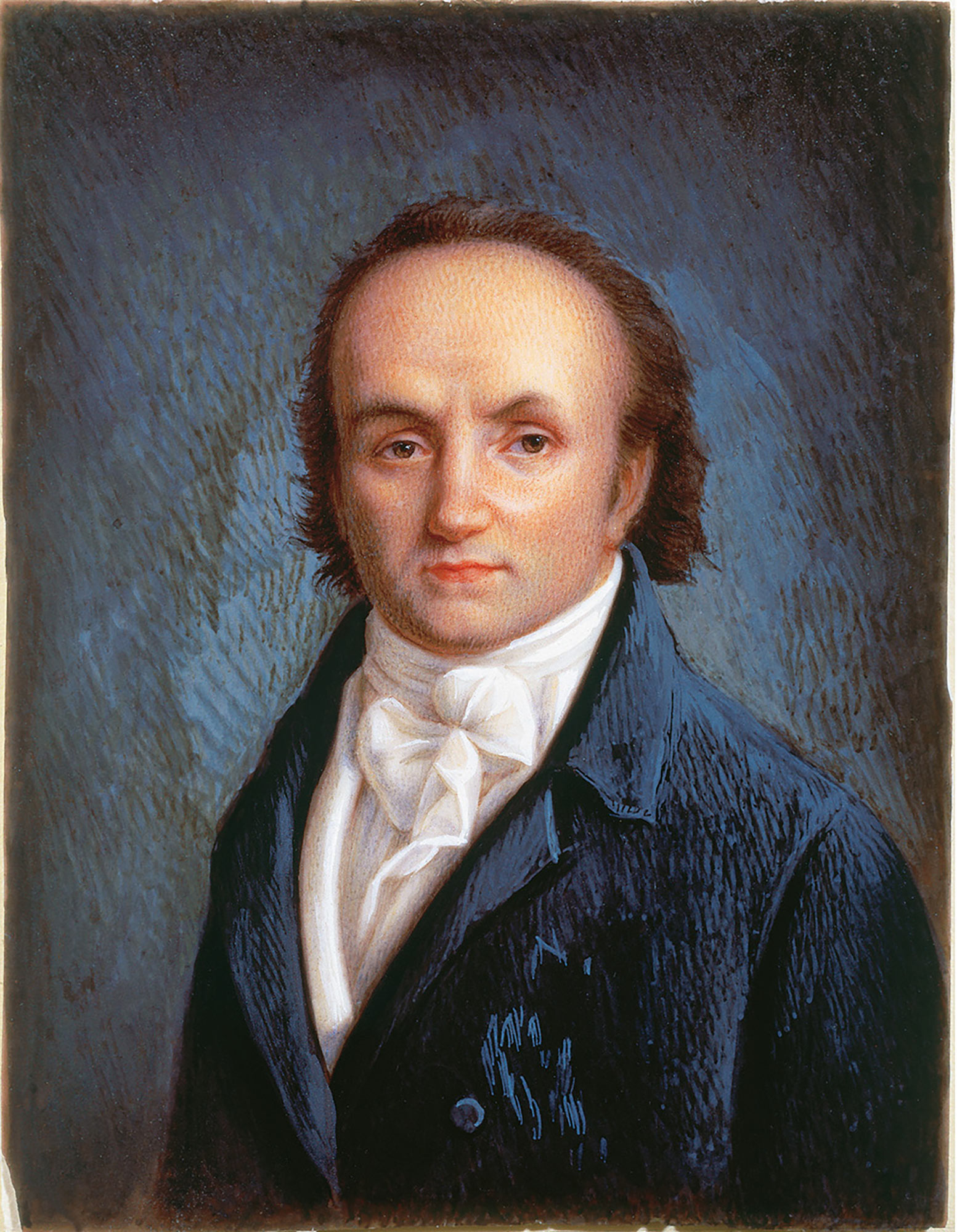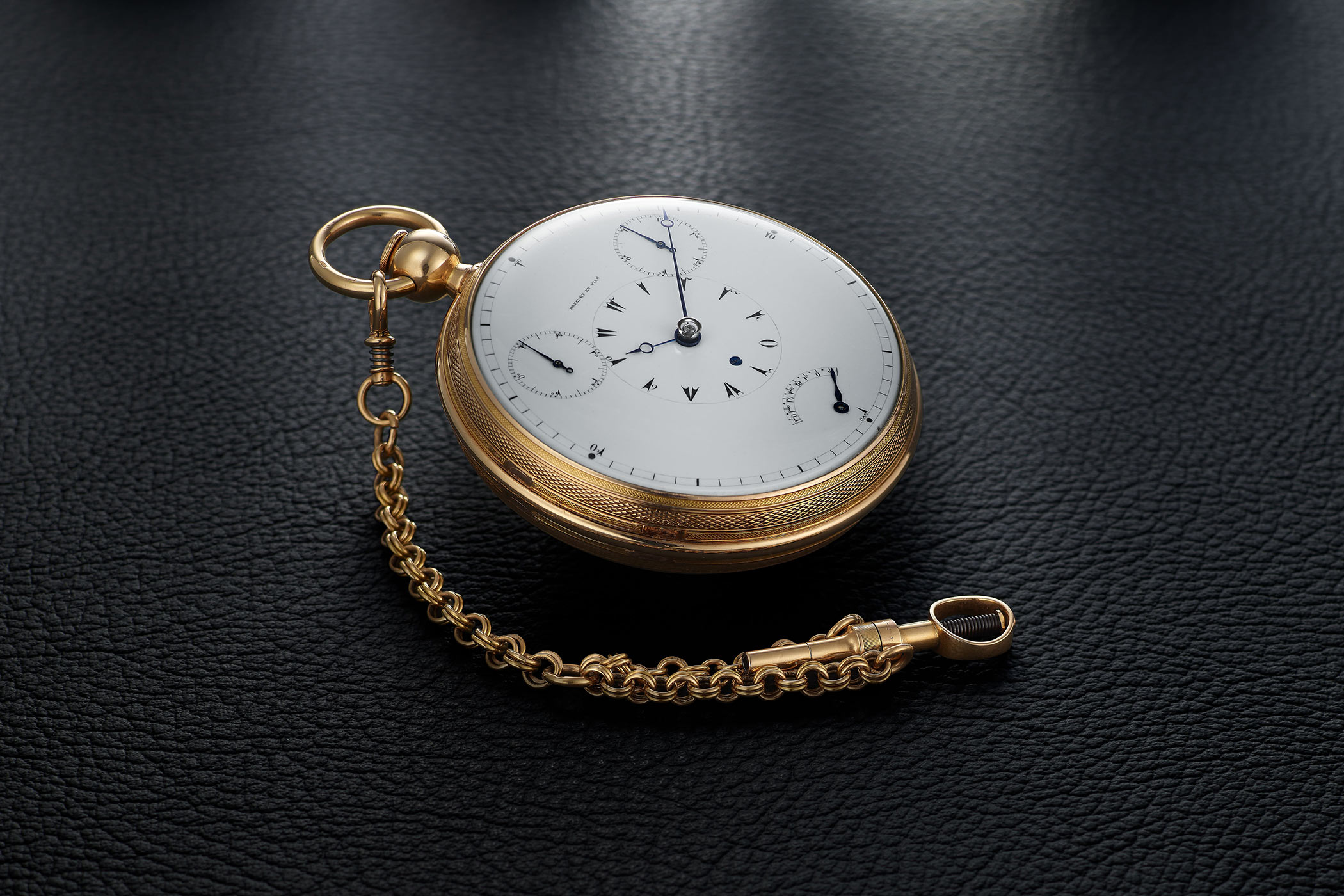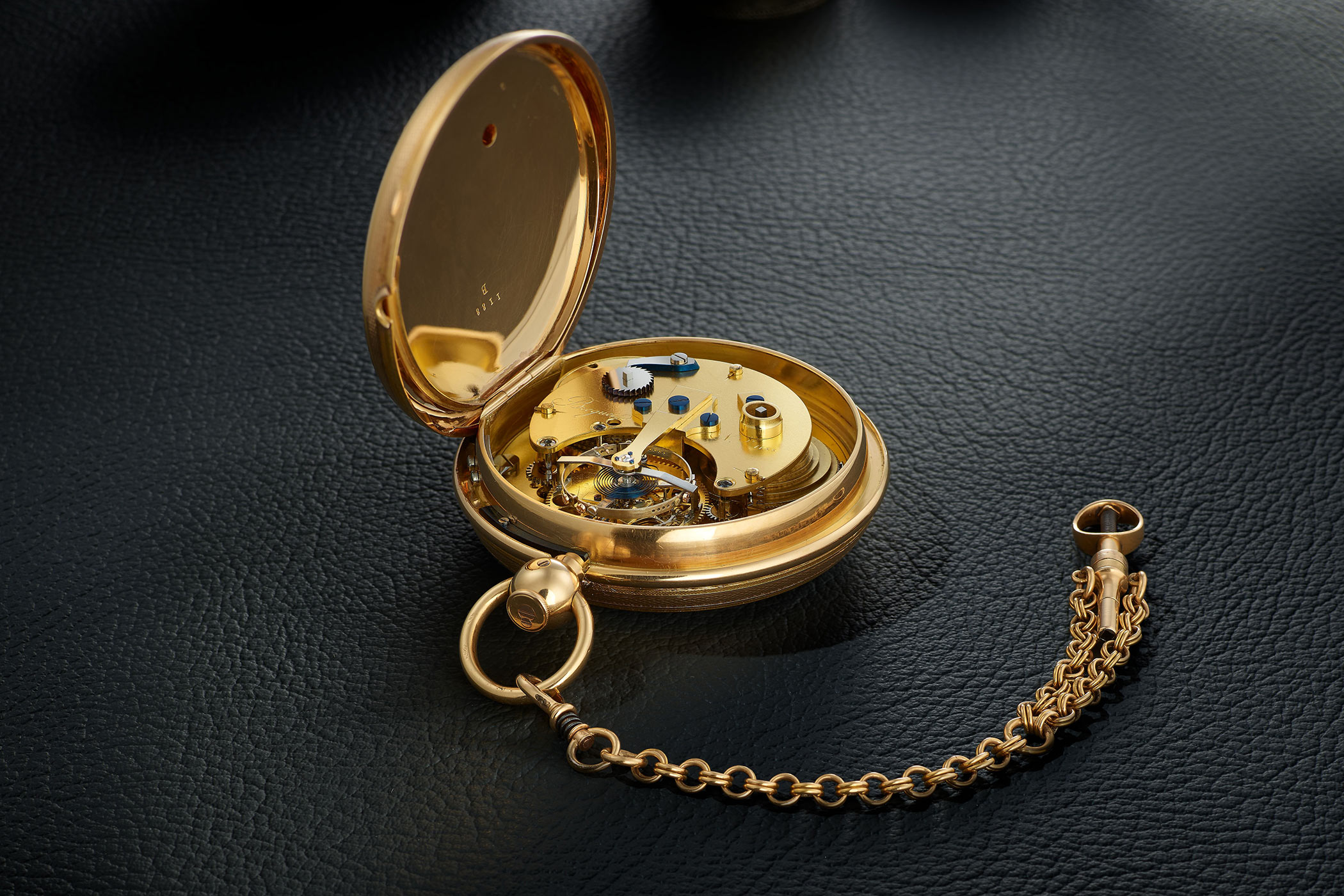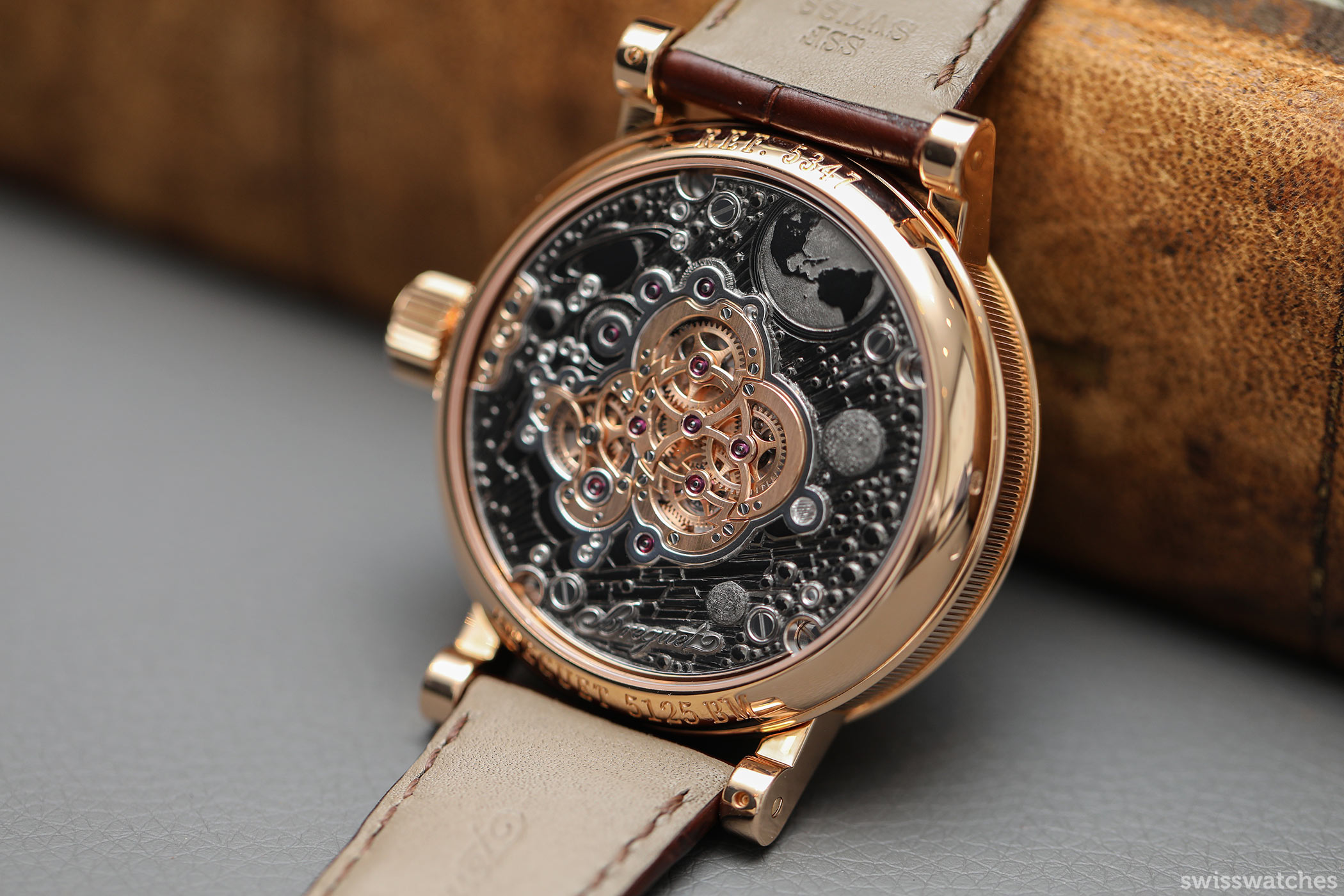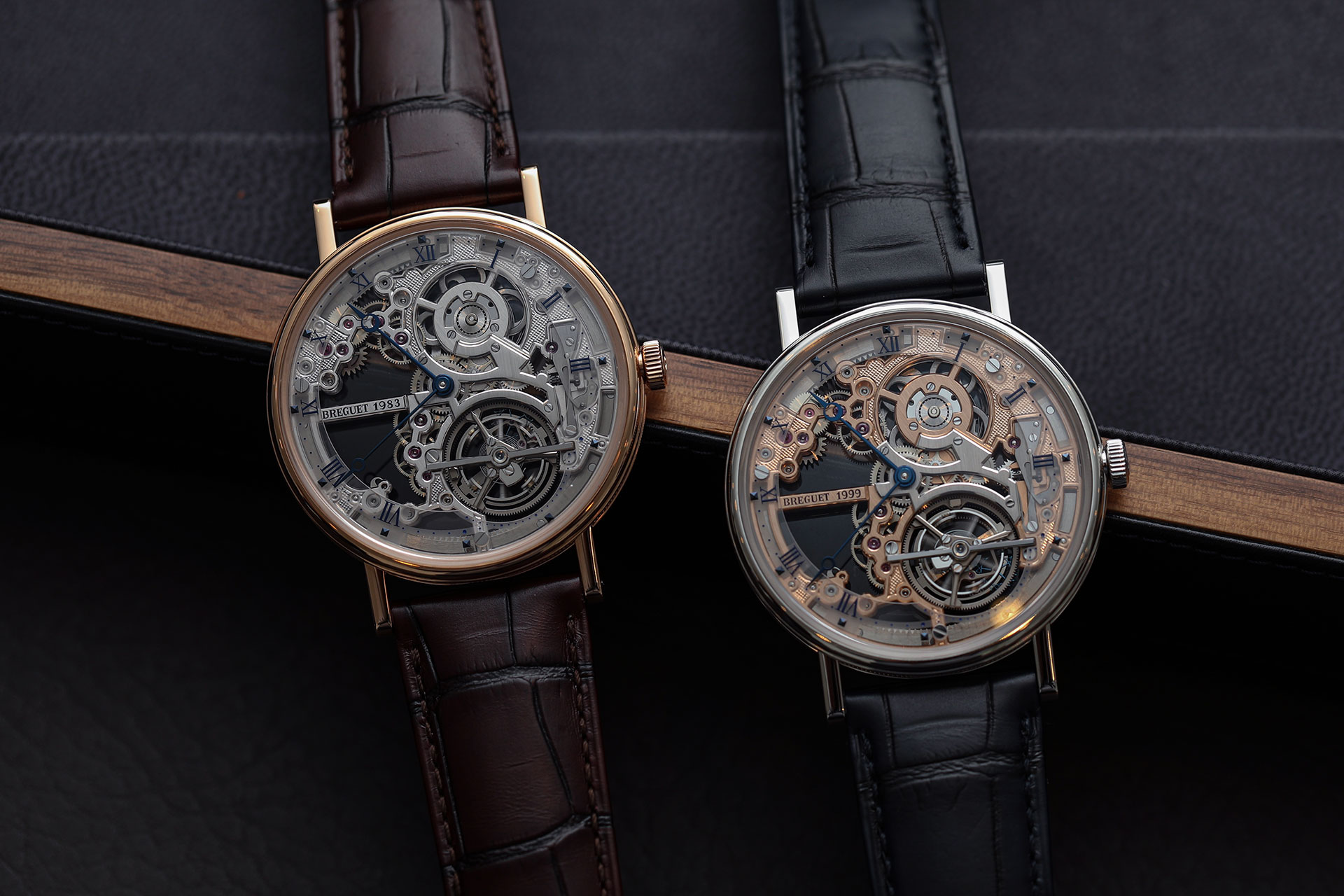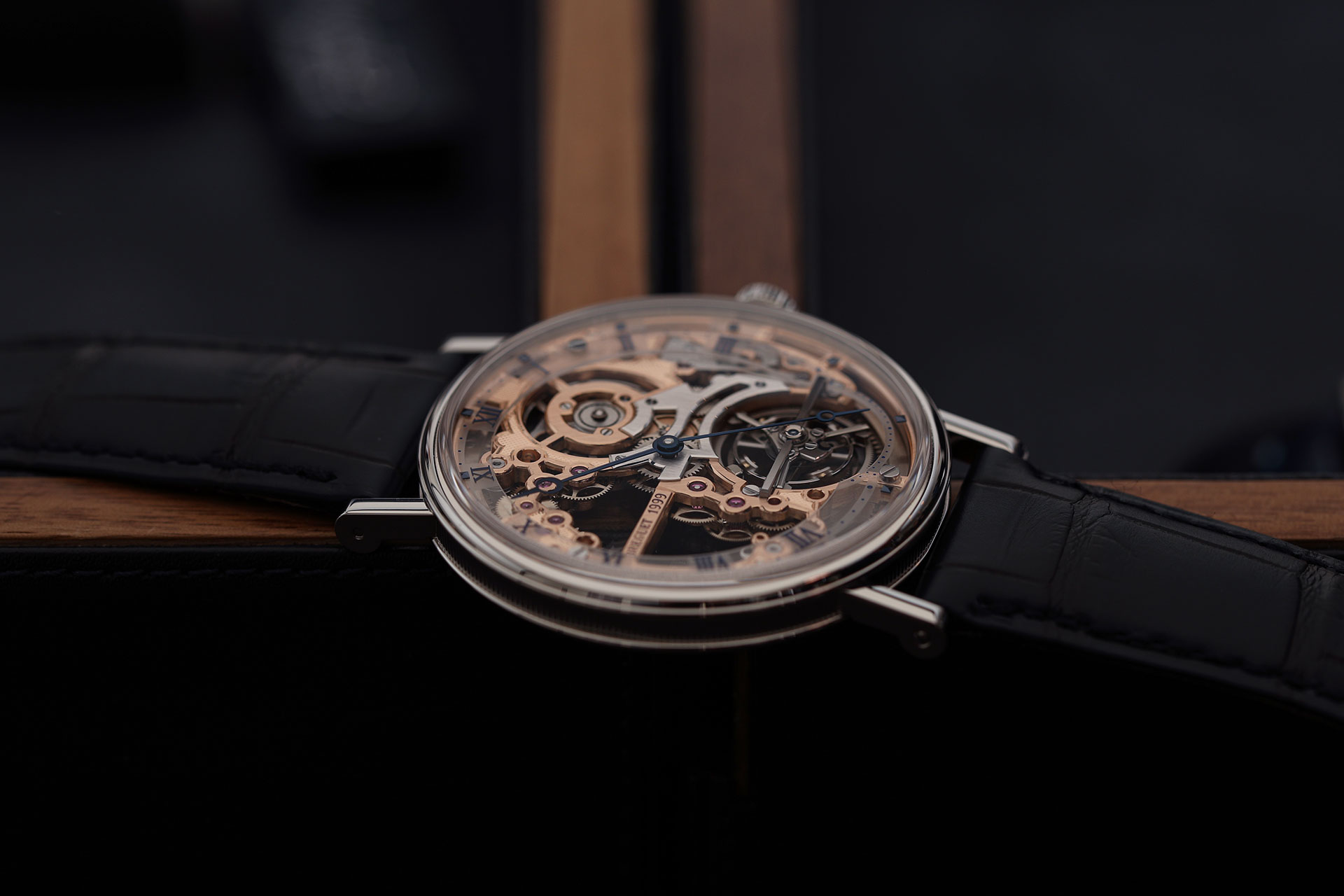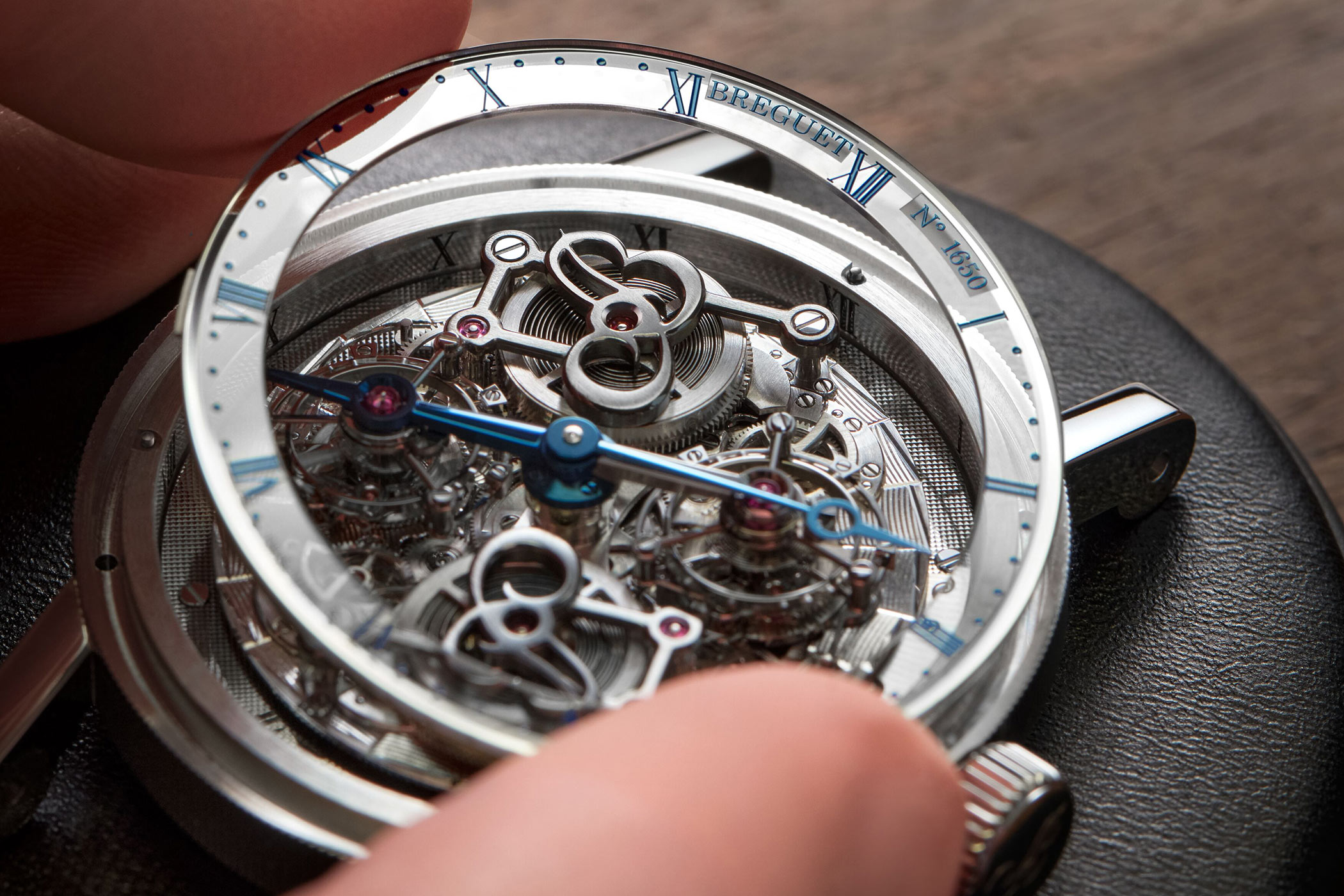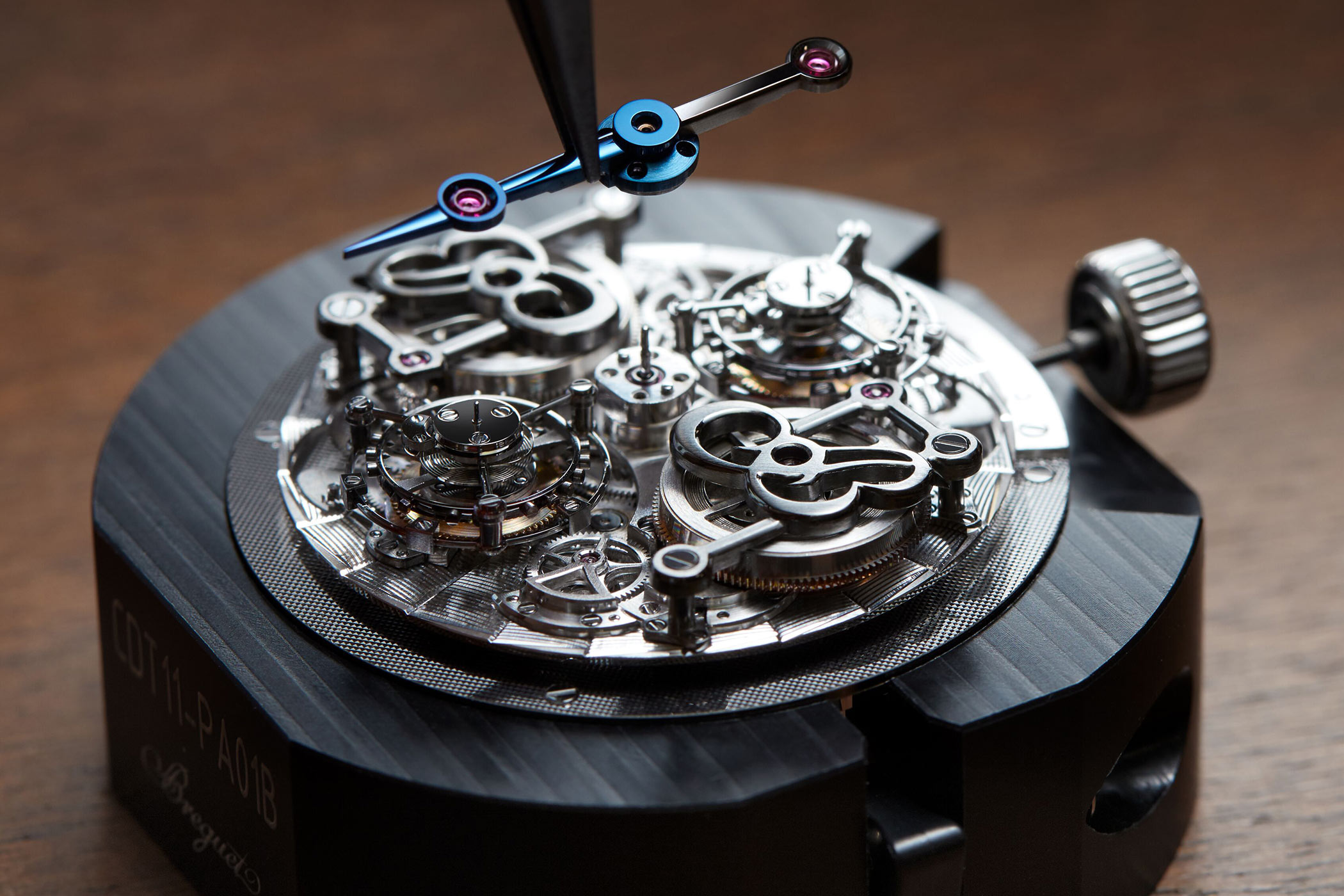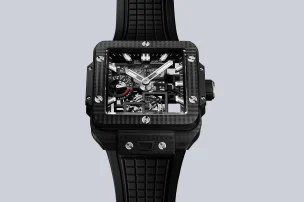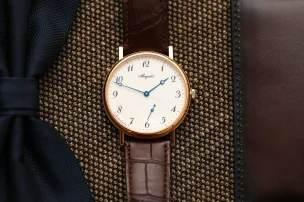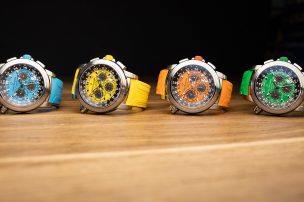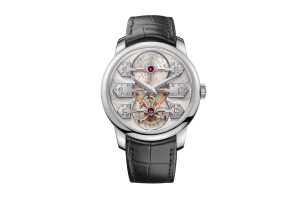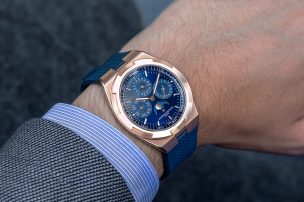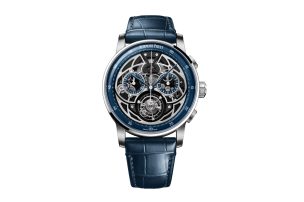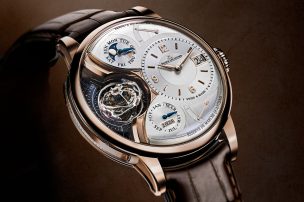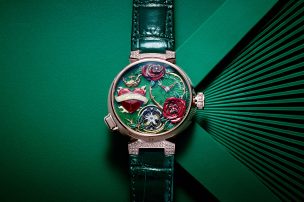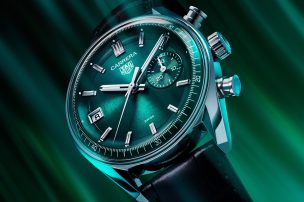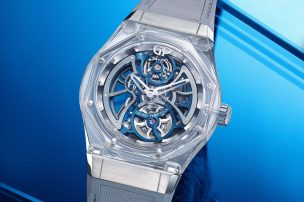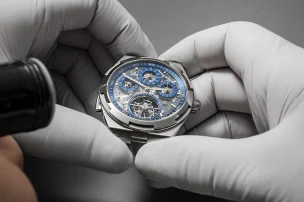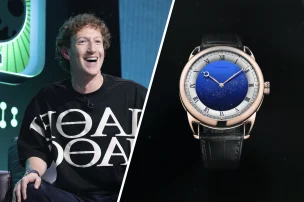
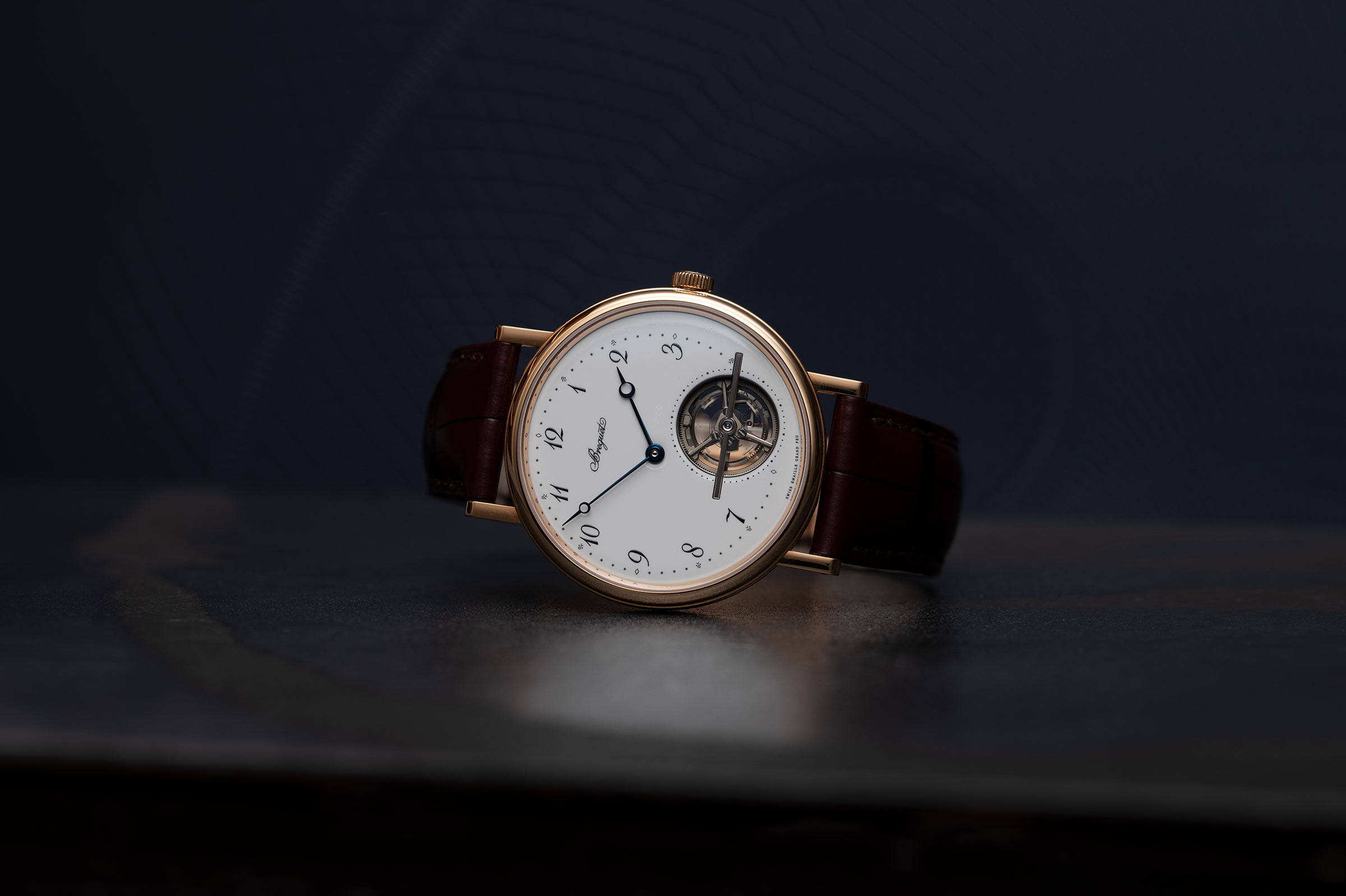
Year Of The Tourbillon: The Story Of Abraham-Louis Breguet, The Man Who Defied Gravity
Once upon a time, in the mid-eighteenth century, there lived a watchmaker named Abraham-Louis Breguet. Born in the quiet, misty medieval lakeside Swiss town of Neuchâtel (then a Prussian municipality), he grew up beneath the shadow of an ancient 12th century castle. With the Jura mountains to the North and Creux du Van canyon to the West, beauty was nothing out of the ordinary for young Breguet.
Despite this idyllic backdrop, however, Breguet did not have the most idyllic of childhoods. His formal schooling ended at 12, while his father had died two years previously. While it sounds terrible, this was arguably a blessing in disguise. Following the death of his father, Breguet’s mother remarried a man called Joseph Tattet, who came from a family of watchmakers. After several years of resisting joining his new family’s trade, Breguet eventually surrendered, agreeing to join a master watchmaker in Versailles at the age of 15. Here, watchmakers hovered around the world’s most famous court, awaiting commissions.
His new mentor was impressed with his acumen, and Breguet soon took up mathematics alongside his apprenticeship. Miraculously, his mathematics tutor went on to introduce him to none other than the very last King of France, Louis XVI. Fortunately for Breguet, the ill-fated leader (who met a sticky end by guillotine during the French Revolution) had a strong interest in mechanics. This was to be the making of Breguet, who was royally commissioned to create numerous complications, both at home and abroad.
Following the completion of his studies, Breguet took up residence at his own new workshop on Paris’ Île de la Cité in 1775, promptly naming it the Breguet watchmaking company. It was here that the magic first happened. Breguet began to conjure up complications, from new escapements, to automatic movements, to his overcoil, to the tourbillon.

A watchmaking legend
It feels important to equate Abraham-Louis Breguet with entrepreneurs of today in order to appreciate his status at the time. His innovation, connections, and internationally acclaimed status were something similar to Elon Musk and his fast-charging Tesla, perhaps – yet it feels wrong to compare the two vastly different characters in any way beyond their international status. This is because Breguet seems to have been, unlike many of those at the top today, someone we can romantically look back on as a true genius, not to mention a compassionate man (he famously saved a friend during the French Revolution, for example, who later did the same for him), and someone not solely working to amass wealth, but rather for pure, unadulterated love of their craft.
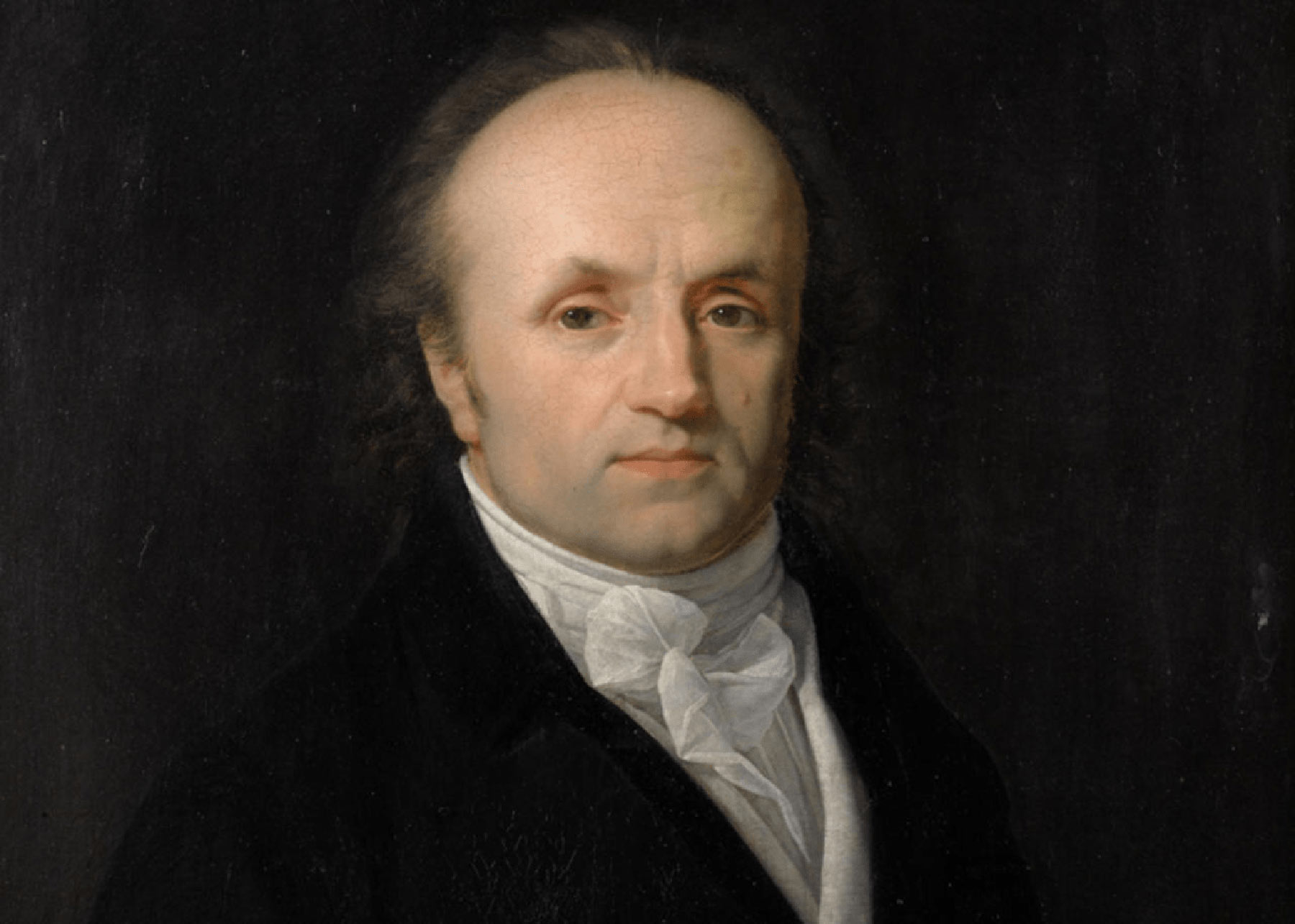
Abraham-Louis Breguet died on 17 September 1823 at the age of 76.
The true tale of Breguet and his tourbillon
This brings us to the subject with which we are concerned in this article; Breguet’s creation of the tourbillon. Perhaps surprisingly, Breguet himself, along with his son, only made a few dozen tourbillons in his lifetime, which we will look at later. Nevertheless, the invention itself, not to mention the beyond rare models still in existence, are the stuff of legend.
Following several years in Switzerland during the French Revolution, rejuvenated and inspired by fellow Swiss watchmakers, Breguet made his way back to Paris in springtime, 1795. That’s not to say he had been having an easy time prior to the relocation. He had been forced to flee from France after affiliating himself with the Girondins (a loosely knit moderate Republican political faction, stemming from the Jacobins). His property on Quai de l’Horloge had been declared state property.
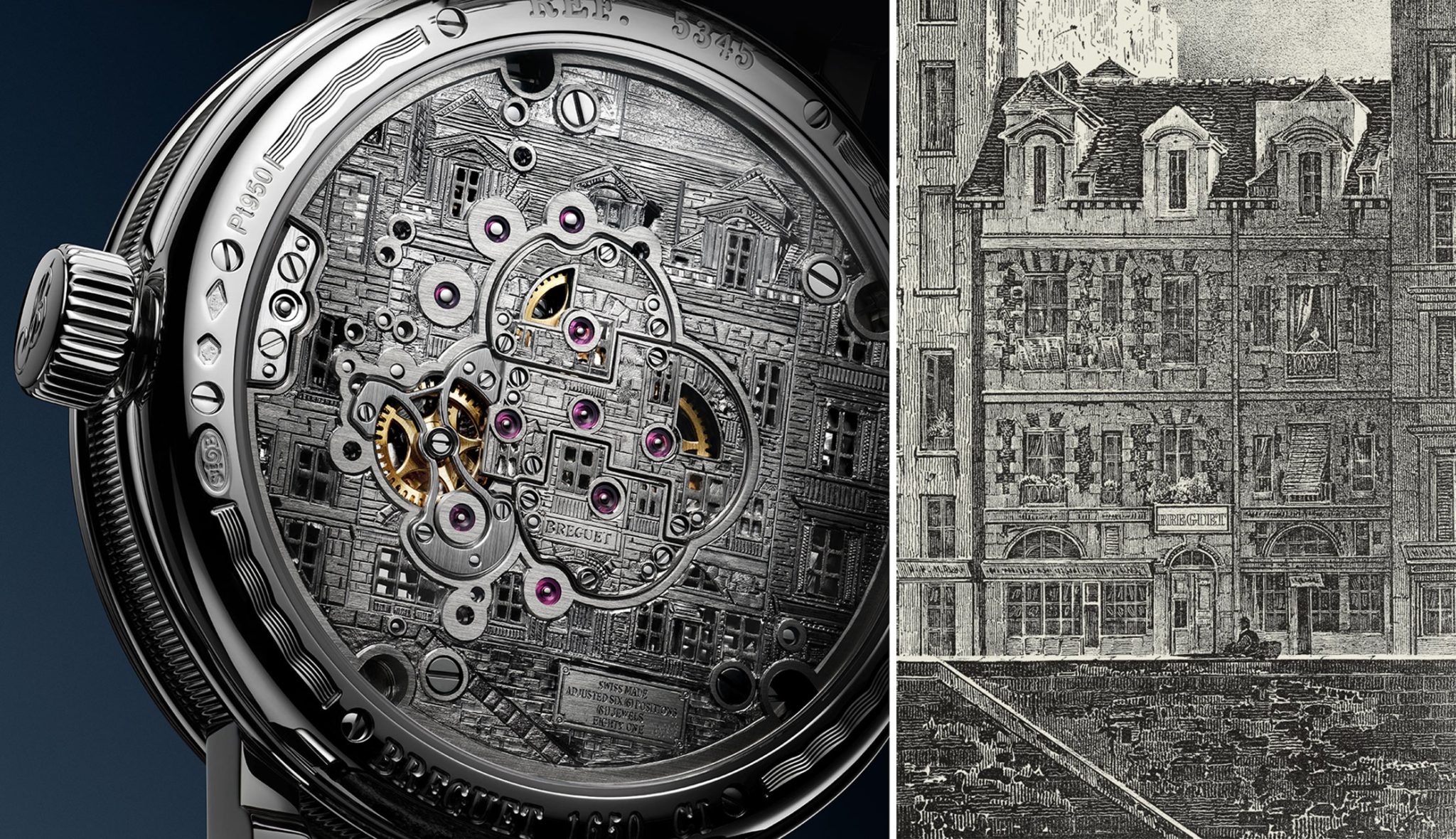
A.-L. Breguet opens his own watchmaker’s workshop
on the Quai de l’Horloge on the Île de la Cité in Paris.
When he did go back, it was simply in response to an express written demand for his return from the French. Nevertheless, within the next five years that followed his comeback, Breguet dreamt up many horological feats – including a particularly powerful new complication, which he referred to as a ‘tourbillon regulator’. For those not well-versed in the etymology; ‘tourbillon’ is French for ‘whirlwind’.
How did Breguet invent the tourbillon?
Hurdle 1: Consider what will help to create a more regular beat
Breguet’s life spanned from 1747 to 1823. It doesn’t take a historian to guess that during this time, the majority of horological creations for those wanting a portable time-telling device was, of course, a pocket watch. The issue with a pocket watch is that it is for the most part stationary; either lying horizontally or vertically. Using his extensive comprehension of mathematics and physics alongside hours of study and observation, Breguet realised that he would need to counter gravity in order to create a more regular beat in his watches overall.
Hurdle 2: Identify which components need to change
Therefore, the master watchmaker set about trying to ‘compensate’ the laws of physics that were affecting the precision of his pocket watches. His goal was to reduce the rate variation to an absolute minimum. He found that the key to doing this lay in the balance wheel – the component most affected by gravity. By countering the effect of gravity on it, he hoped the pocket watch would perform consistently, regardless of its position. In some cases from all eras, you will still read sentences such as ‘adjusted to x positions’ on the caseback of a watch with a tourbillon.
Hurdle 3: Counter gravity itself
So how did Breguet counter the effect of gravity? Essentially, he put all components (balance, spring, escapement and escapement wheel) that were most sensitive to gravity into a cage, which in turn rotated around its own axis once per minute. This, in essence, is a tourbillon. Due to the rotating tourbillon, the effect of gravity was equally dispensed, and the rotational deviations caused by a certain position could be avoided. This ingenious solution could effectively create an average rate for the watch.
220 years ago: Patenting the tourbillon
‘I have succeeded in cancelling, through compensation, the anomalies caused by the different positions of the centres of gravity of the regulator movements …’
Exactly 220 years ago, in 1801, Breguet patented his creation. However, a mere ten years later, the patent ran out, never to be renewed. The invention was met with a slow start, with sales taking around six years to pick up. Breguet spent years promoting his creation wherever possible, for example at the French industrial fairs held in Paris in 1802, 1806 and 1819. He lauded his invention for its ability to allow movements to ‘maintain their accuracy, irrespective of whether the position of the watch is upright or tilted.’
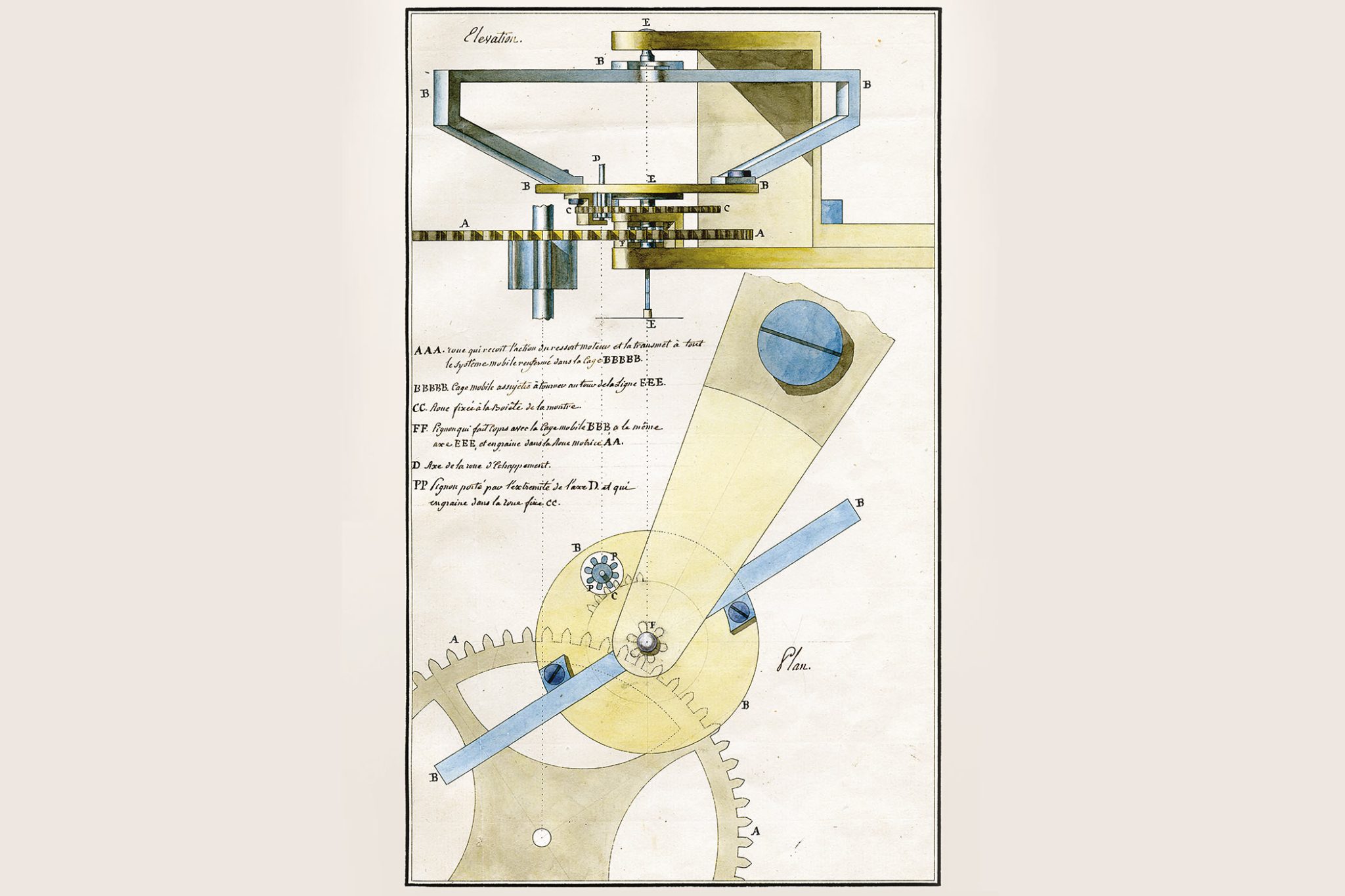
Watercolor plate from the patent documents. Filed in 1801 for the tourbillon regulator.
Credit: © INPI Paris. 430×550
Eventually, other watchmakers began to play around with the tourbillon, too. Perhaps most notably, Danish horologist Bahne Bonniksen used Breguet’s findings some decades later to come up with his carousel mechanism.
Breguet’s tourbillon pocket watches: cultural influences
Before we meet Breguet’s very own tourbillon pocket watches, it is worth delving a bit further into the past. As someone who studied humanities, I find it interesting to consider life at the turn of the 19th century when thinking about Breguet’s tourbillon watches. After the execution of King Louis XVI in 1793, there was not only a continued revolution in France’s political sphere, but across all aspects of life – including the arts.

At the time that the tourbillon was invented, up until the production of his final tourbillon pocket watch, Breguet was living through two key movements: the Enlightenment (going hand-in-hand with neoclassicism) and romanticism. Both are crucial to for us to consider in light of Breguet as an inventor.
A return to ancient aesthetics
In the early 1800s, while romanticism was beginning to grow its first tentative roots, neoclassicism still ruled in European art. In reaction to the highly decorated, frivolous rococo and Baroque styles still prevalent at the time, neoclassicism produced the likes of linear Neo-Grecian vase paintings and Ancient Roman/Greek architecture, inspiring a return to simplicity. This neoclassical simplicity points us towards the inspiration behind Breguet’s minimalist designs for his complex tourbillon watches.

The 1787 painting, The Death of Socrates, by Jacques-Louis David, who led the neoclassical artistic movement in France.
Credit: The Metropolitan Museum of Art
A scientific revolution
The neoclassical artistic creations emerging at the time were not only the result of inspiration stemming from the Antiquity, but on a more profound level, they aimed to make a return to the period’s moral and intellectual human values. Thus, together, scientific rationalism ruled the early 19th century in France, allowing inventors well-versed in mathematics and physics, such as Breguet, to thrive.
On the other hand, romanticism (although then more prevalent in England and Germany than France) revolted against this scientific rationalisation of nature. Romanticism was rather in favour of escaping the realities of life and celebrating individual expression.

Painting by French artist Théodore Géricault, 1818. Géricault was a pioneer of the Romantic movement.
Credit: The Metropolitan Museum of Art
Perhaps Breguet took inspiration from both the romantic idea of the individual imagination as a critical authority and enlightened study of horology as a science. This combination of independent creativity and scientific experimentation surely played a role in enabling the master watchmaker to invent something entirely novel, individual, and highly complex.
Meet Breguet’s tourbillon watches
It is in light of this ‘neoclassical-versus-romantic’ backdrop that I introduce you to some of Breguet’s few tourbillon watches. Alongside nine discarded pieces, Breguet and those at his workshop created 40 successful tourbillon timepieces between 1796 and 1829. Of these, 35 came in the form of pocket watches, while the remaining five came in the form of clocks. This, if it sparks your interest, included a Sympathique clock, a so-called clock and watch set, a naval chronometer, a travel clock, as well as an all-important large-scale model for demonstrations.
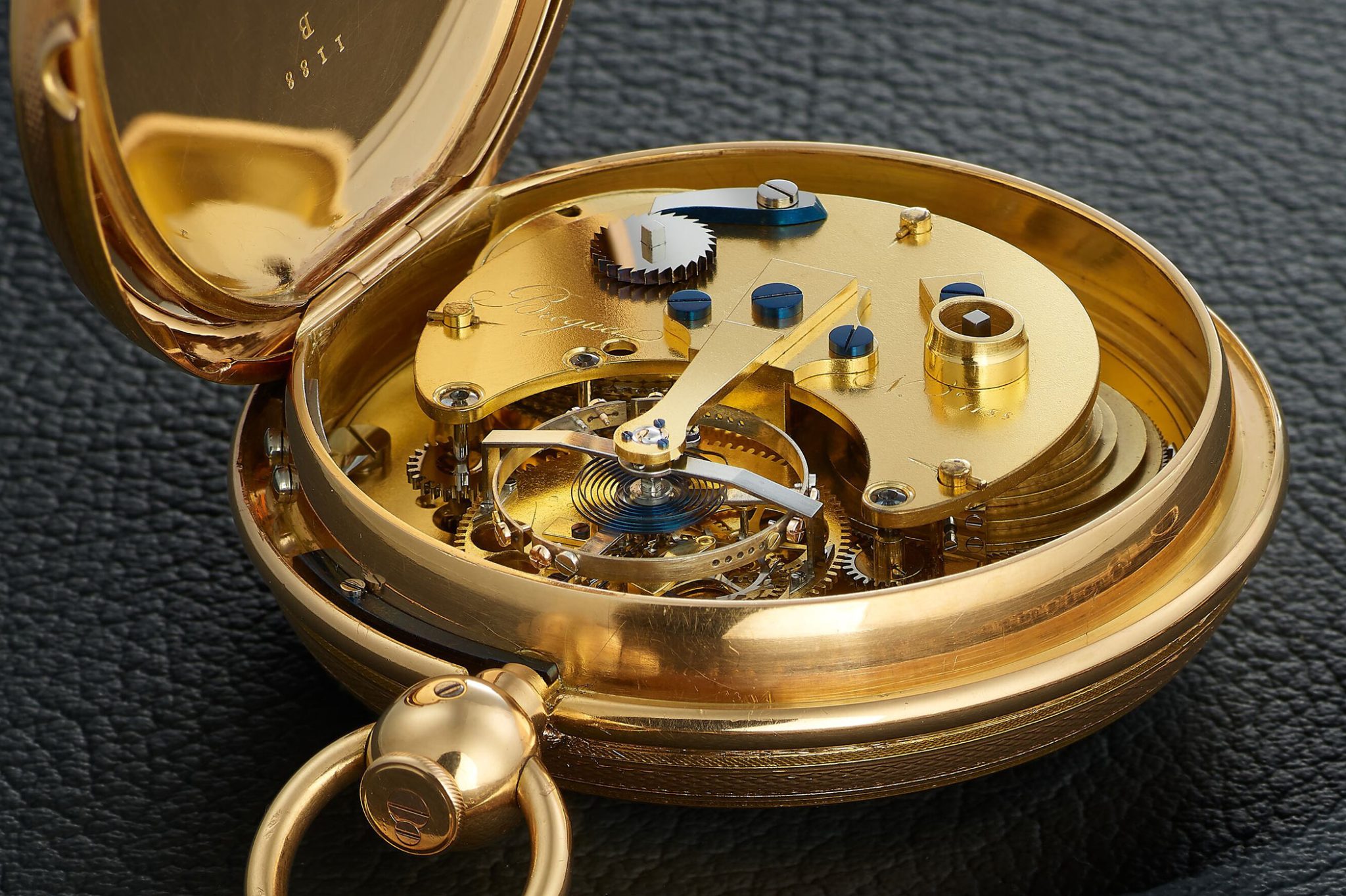
The naval chronometer might seem unexpected, however tourbillon timepieces proved popular amongst those at sea. Of the 40 tourbillon pieces created, ten were used by the likes of ship owners and sailors, for navigating at sea and calculating longitudes. Notably, British army officer and astronomer Thomas Brisbane in Australia his tourbillon timepiece for this exact purpose. Some of these ten pieces were to remain in use across the world’s oceans for the next fifty years, by scientists, sailors, and explorers alike.
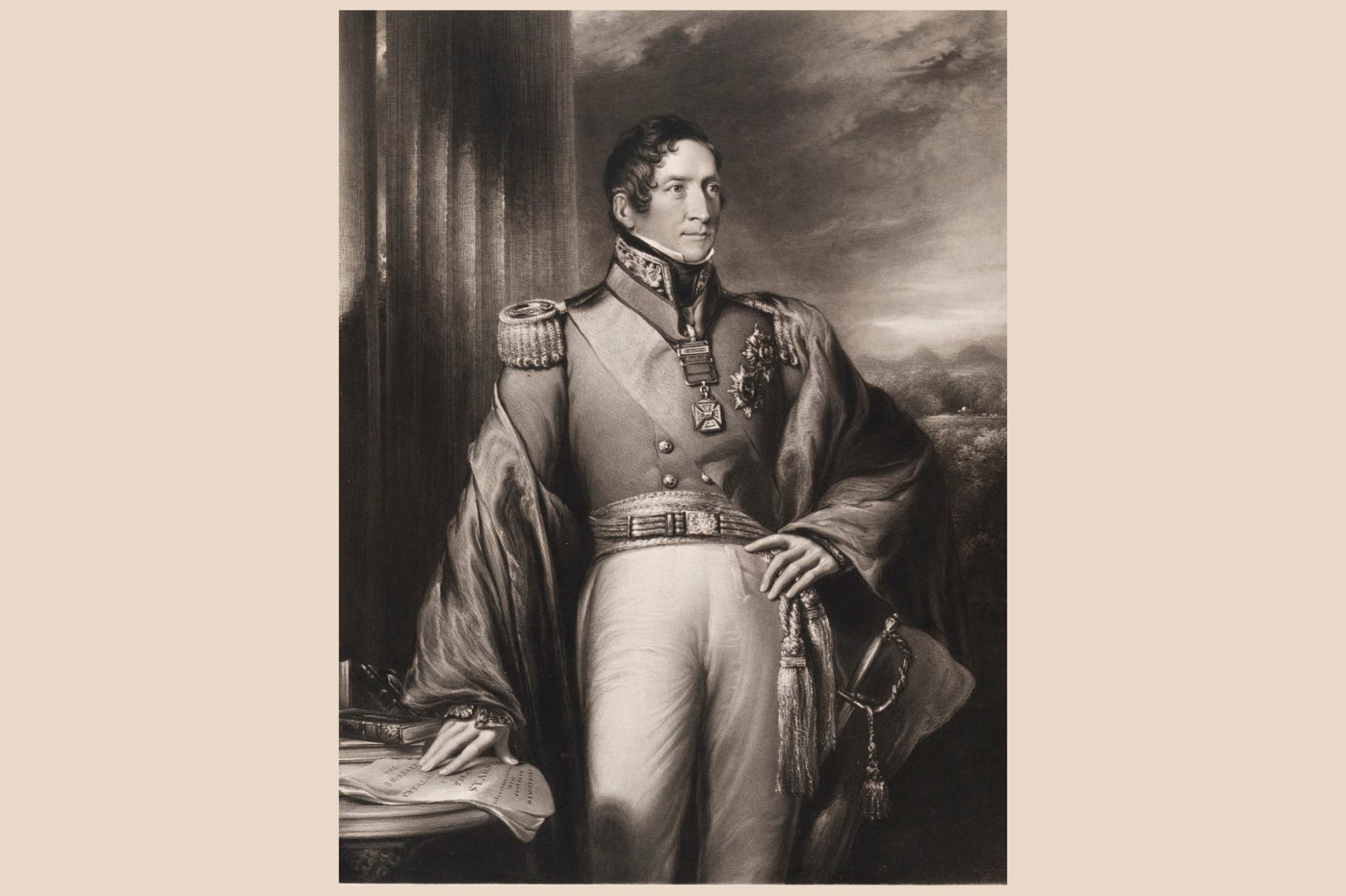
Sir Thomas Brisbane, owner of a Breguet tourbillon timepiece.
Credit: National Portrait Gallery, Australia
Typical features
As a result, for the most part, Breguet’s tourbillon was seen as invention to benefit not wealthy civilians, but rather serve a scientific purpose in a time of Enlightenment. Nevertheless, the watchmaker did not scrimp on the details. Each model from the time has either a gold or silver case. It is easy to see neoclassical influences upon each dial, with gold, silver or enamel markings enhancing various functions’ markings. Furthermore, in line with the artistic movement favouring clarity and simplicity, Breguet’s spacious dials for the tourbillon pocket watches were highly legible.
No dial was the same. Given that one can integrate the tourbillon mechanism into several types of escapements and watches, an array of functions existed alongside the tourbillon. This included constant seconds, seconds on demand, power reserve indicators, and even the occasional thermometer.
Early evolution of Breguet’s tourbillon timepieces
Designing a blueprint of his tourbillon invention was by no means the end of the road for Breguet. Rather, following its invention, Breguet spent over a decade fine-tuning it. In these first ten years, he created his first ‘series’ of tourbillon pieces, consisting of a mere six timepieces. Below you will find a few of the highlights, demonstrating the characteristics of these incredibly rare, priceless pieces of history.
Tourbillon No. 1176
The tourbillon No. 1176 was one of Breguet’s first ever tourbillon pocket watches to appear. To comprehend the intricacy and level of hours that were required to create the tourbillons, consider this. The manufacture of the 1176 commenced in July, 1802. Yet it was not to be finished until February, 1809.

The model also integrated an earlier invention of the watchmaker, the natural escapement. Conceived in 1789, the idea behind this special double-wheel chronometer escapement was to surpass the need for lubrication. Unfortunately, it had numerous shortcomings, in particular the backlash in the motion of the wheels. Nevertheless, the idea remained in the heads of experimental watchmakers across the centuries. Meanwhile, the tourbillon itself also featured a display for running seconds as well as timekeeping, with the ability to start and stop on demand.
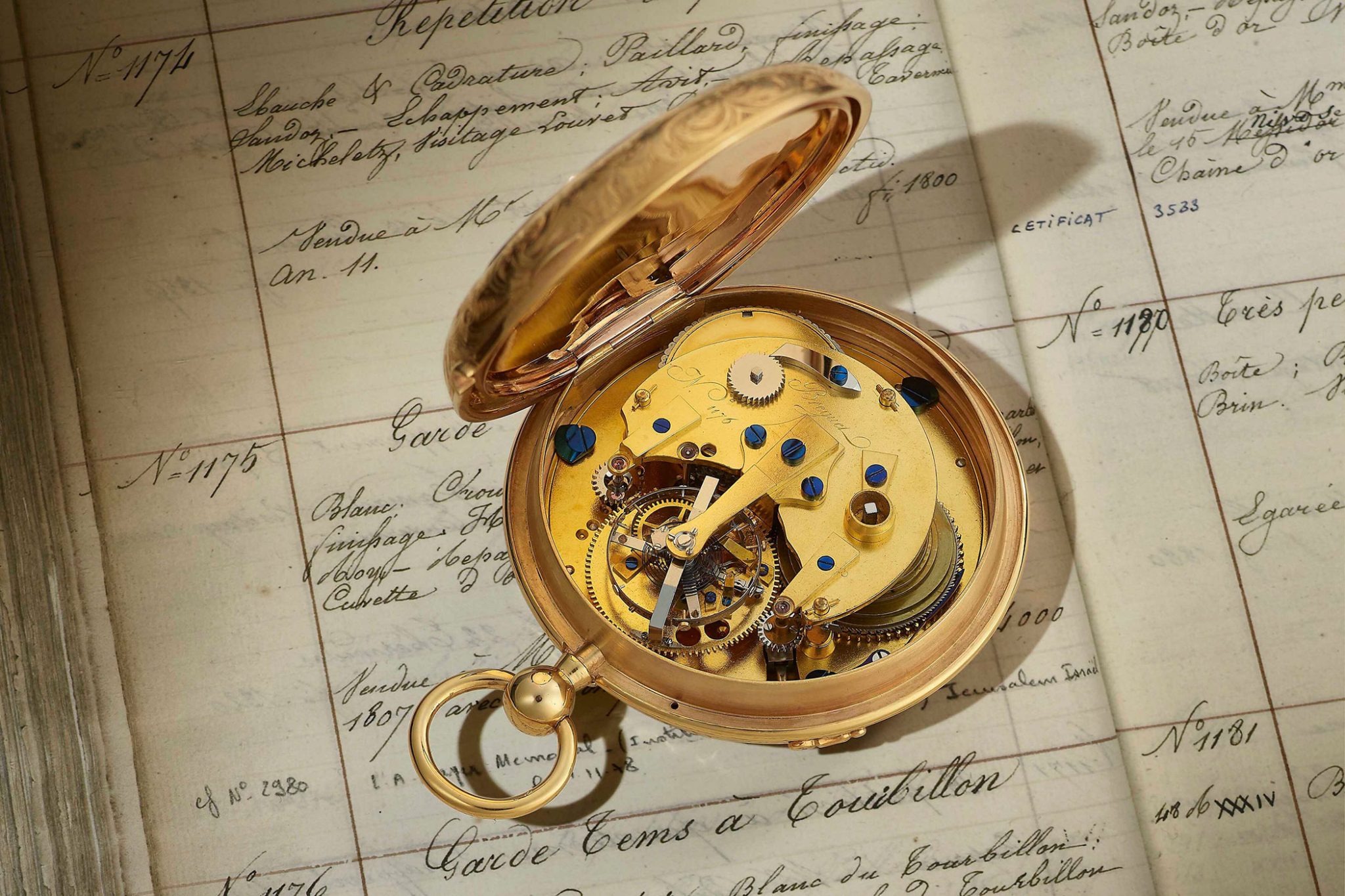
Tourbillon No. 1188
Another member of the original tourbillon series by Breguet is the No. 1188. This model, sold in 1808, was destined for one of Breguet’s numerous noble customers; Prince Antonio de Bourbon of Spain. Taking five years to complete, it originally featured a guilloche gold dial. However, this was replaced in 1841 with an enamel dial featuring Turkish numerals. Breguet fitted the 1188 with not a 1-minute, but rather a 4-minute tourbillon.
Tourbillon No. 1297
The third tourbillon watch ever to be sold by Louis-Abraham Breguet, the No. 1297 became the property of George III of England (who sadly remains best known for losing the American colonies and going mad). Despite this, he certainly had a fine pocket watch. He was (amongst other things) a horology enthusiast, also owning the first known level escapement watch, conceived by renowned watchmaker Thomas Mudge. The 1297 is host to a stunning guilloche dial that, in my eyes, is living proof of maison Breguet’s talent. Furthermore, it is the only of Breguet’s tourbillon watches to feature writing in English, reading: ‘Whirling about regulator’ – a direct (and today, mildly amusing) translation from the French word tourbillon that doesn’t have quite the same impressive ring as ‘whirlwind’.
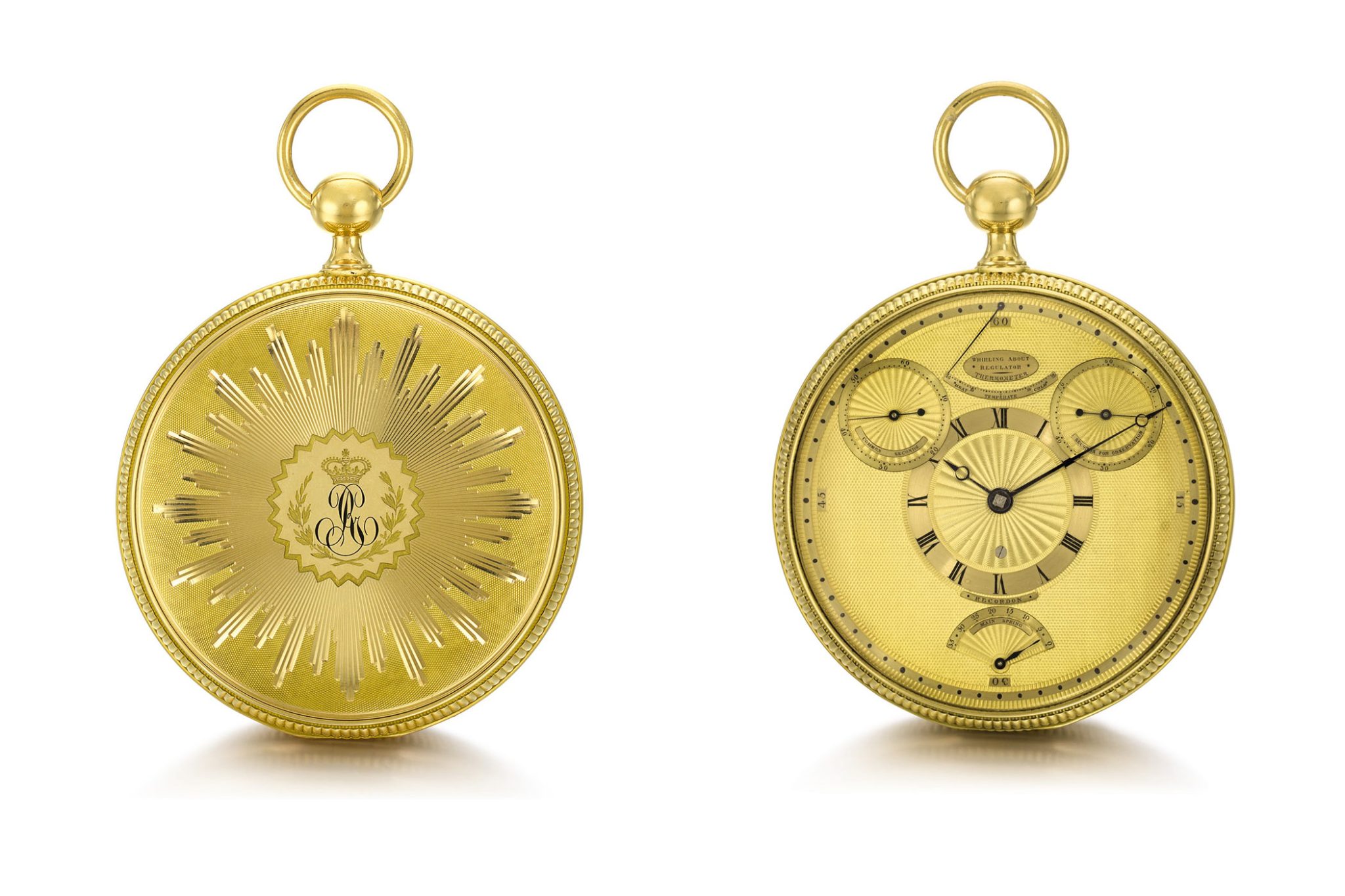
Credit: Sotheby’s
The tourbillon within the 1297 is also a four-minute tourbillon with a Robin escapement, as opposed to the aforementioned natural escapement. Alongside Breguet producing several of these four-minute (as well as six-minute) tourbillons at the time, the Robin escapement is also a rarity. In fact, it is believed to be the only tourbillon created by Breguet to feature this escapement. The escapement, like the natural escapement, was unfortunately flawed, being highly sensitive to shocks, making it an ill-fated invention in the horological world. But as Breguet proved, you don’t know unless you try.
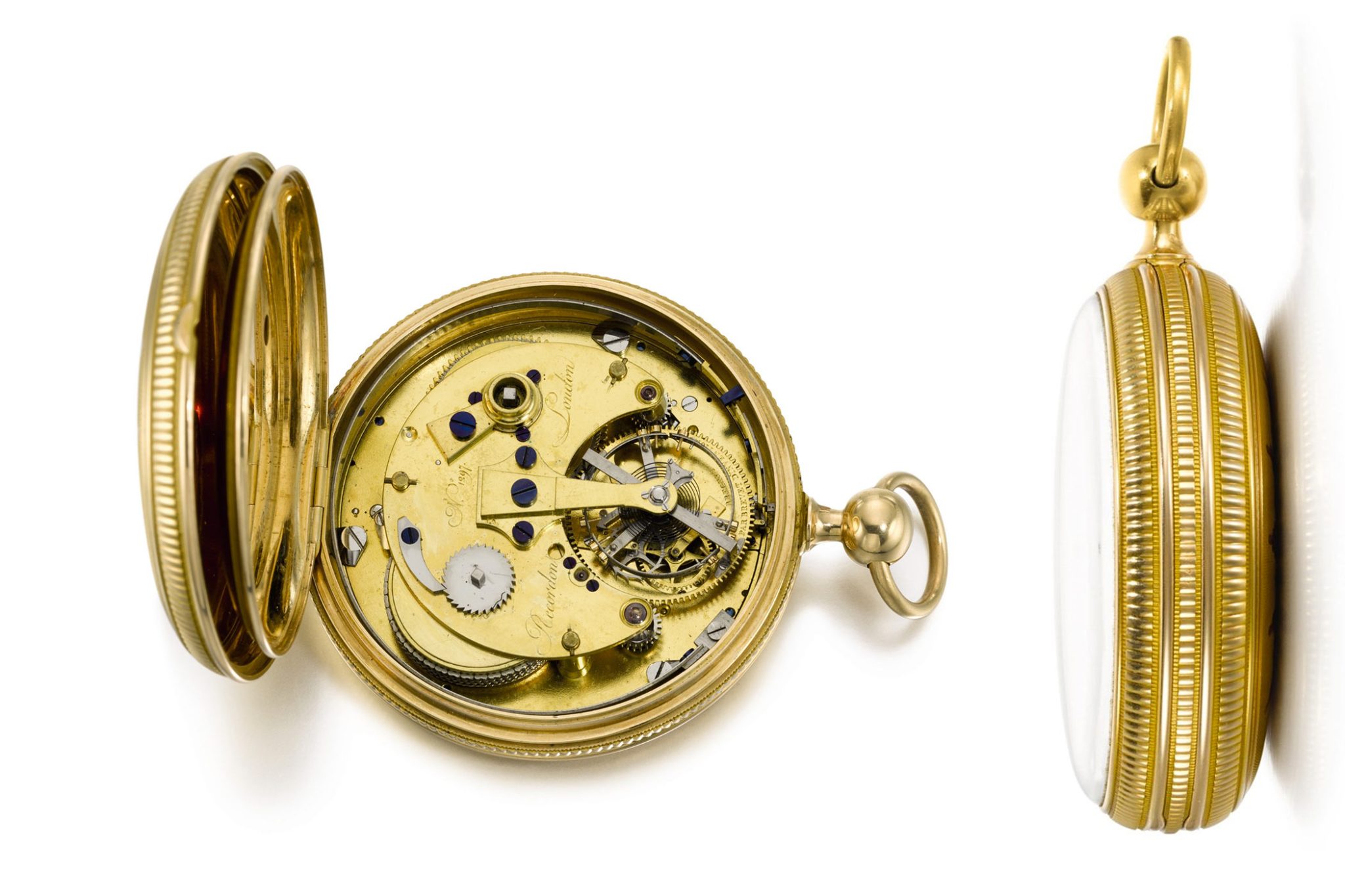
Credit: Sotheby’s
Tourbillon No. 2567
Created in a shorter time period of three years, from October 1809 to December 1812, this iconic model was produced after Breguet’s initial series of six was complete. The master watchmaker’s 2567 features typical Breguet blued steel hands and an exquisite guilloche dial. Furthermore, the tourbillon rotates this time in one minute – a speed which Breguet had only recently adopted at the time of its creation. The fine finishing on the dial is something any Breguet fan will quickly equate to the models of today. As these first tourbillon models show, the DNA of Breguet tourbillon watches was undoubtedly beginning to form.
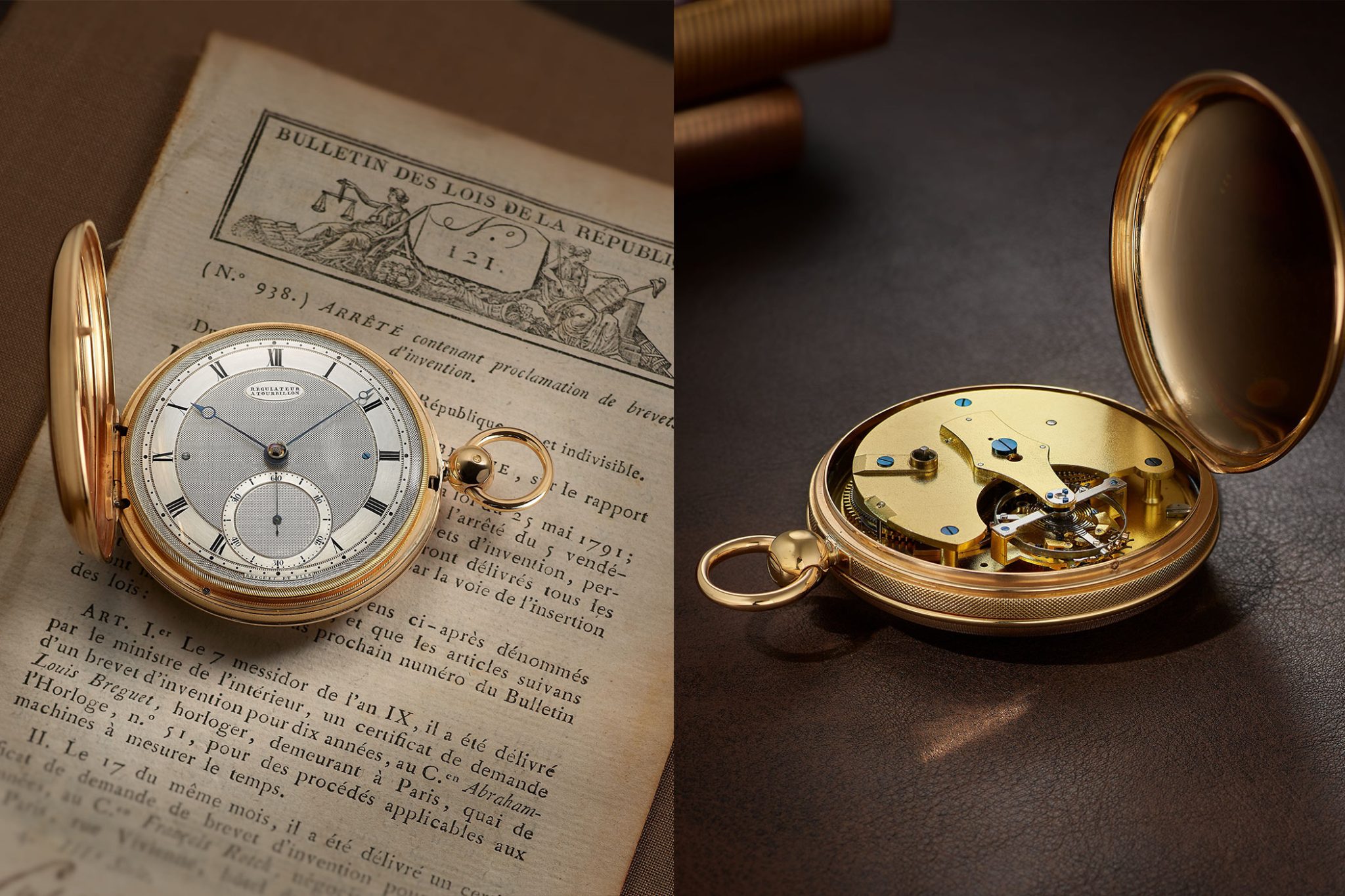
The enduring appeal of the tourbillon
So why is this seemingly vital device no longer necessary in modern watchmaking? The answer is simple. Unlike pocket watches, modern wristwatches are not in one position all day, but rather constantly on the move in varying positions, twisting in motion with our wrists.
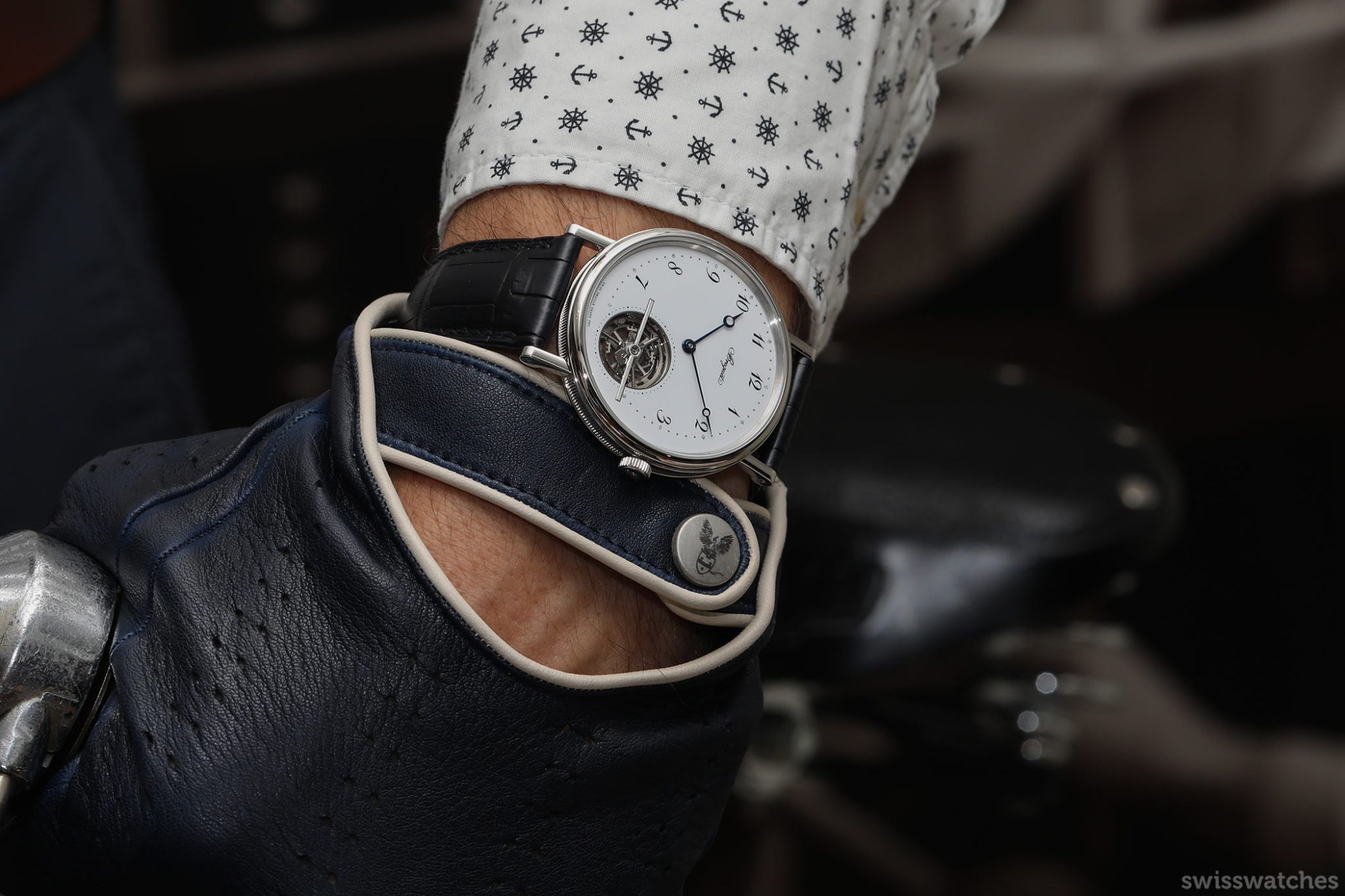
The Breguet Classique Tourbillon Extra-Plat Automatique 5367 in Platinum
Furthermore, they are always dial-side up; in this position, there is the least amount of gravitational pull affecting the movement. Nevertheless, it remains a feat of watchmaking skill and craftsmanship to this day. As the models above demonstrate, the original tourbillon pocket watches did not even display the tourbillon movements. Today, the complication is more often than not displayed on the dial, indicating a horology house’s prestige and watchmaking ability. This brings us to some of the modern tourbillon models to emerge from maison Breguet in recent years, 220 years after its patent by the man himself.
21st century craft
Today, we have five lines in which Breguet’s tourbillon makes an appearance. These are the Héritage, Marine, Classique Complications and Tradition watches. If we narrow it down, we have 16 key models that are vital in creating a thorough overview of Breguet tourbillon watches in the 21st century.
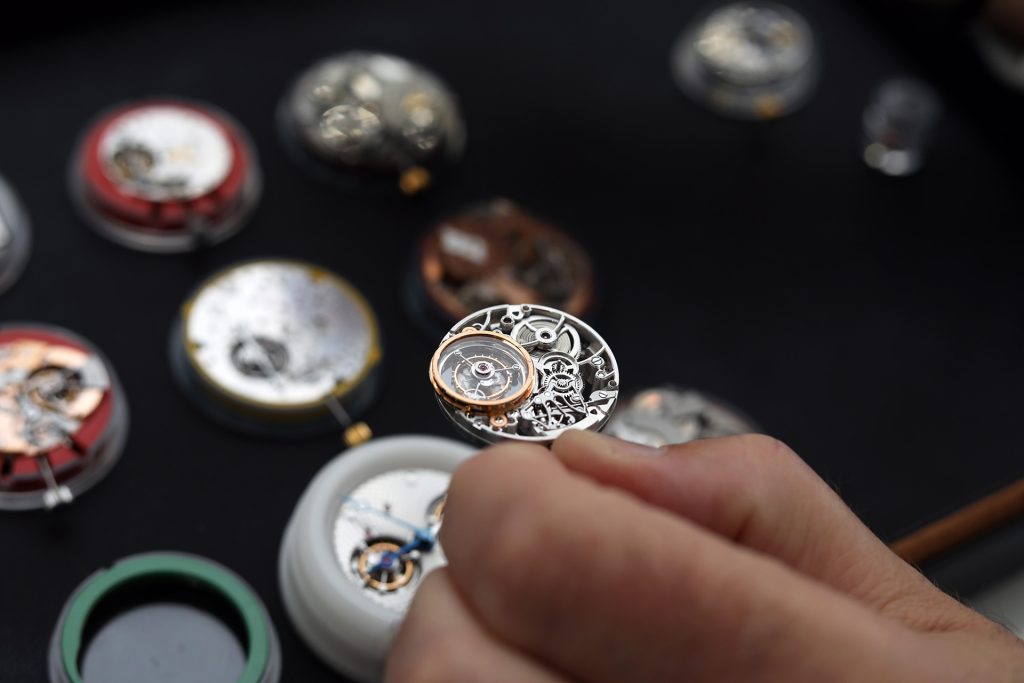
2003
Classique Grande Complication Tourbillon 3358
In 2003, Breguet brought out this glittering white-gold model. Its case features the typical Breguet fluted baseband, while the bezel glitters with 73 diamonds. Clearly a watch intended to impress, it also showcases a decorated dial – something few do better than Breguet. The gold, engine-turned, and mother-of-pearl dial is individually numbered and signed with the ‘Breguet’ secret signature.
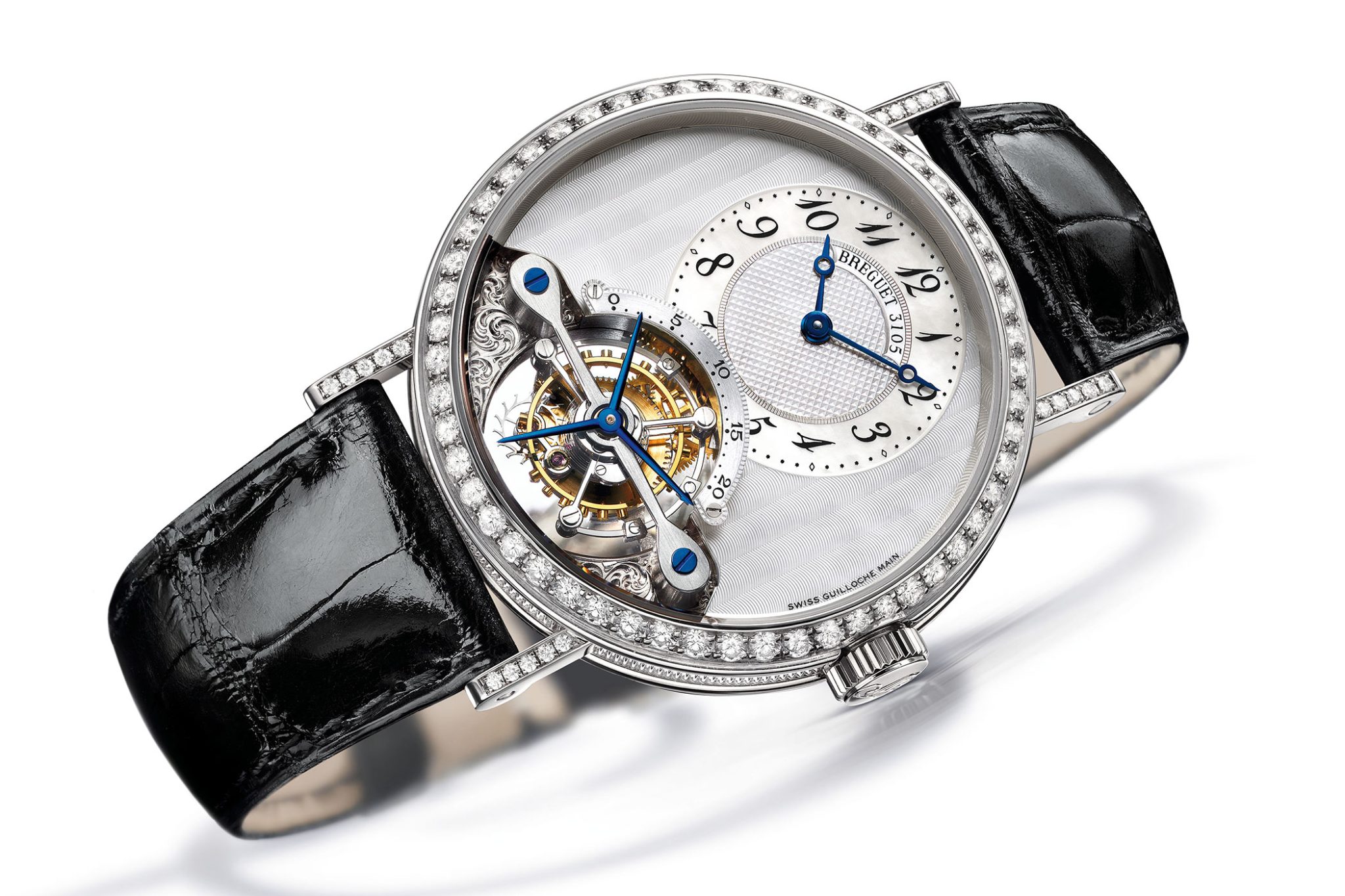
While an off-centre chapter ring with Breguet numerals lies at 12 o’clock, the tourbillon lies at 6 o’clock, using blue details to match the open-tipped Breguet hands in blued steel. As for the movement driving it, the manual winding calibre 558.1T integrates a one-minute tourbillon in a polished-steel carriage, which runs off the fixed fourth wheel, as well as a lateral lever escapement. As well as the tourbillon making an appearance on the front, the calibre is also visible via the caseback.
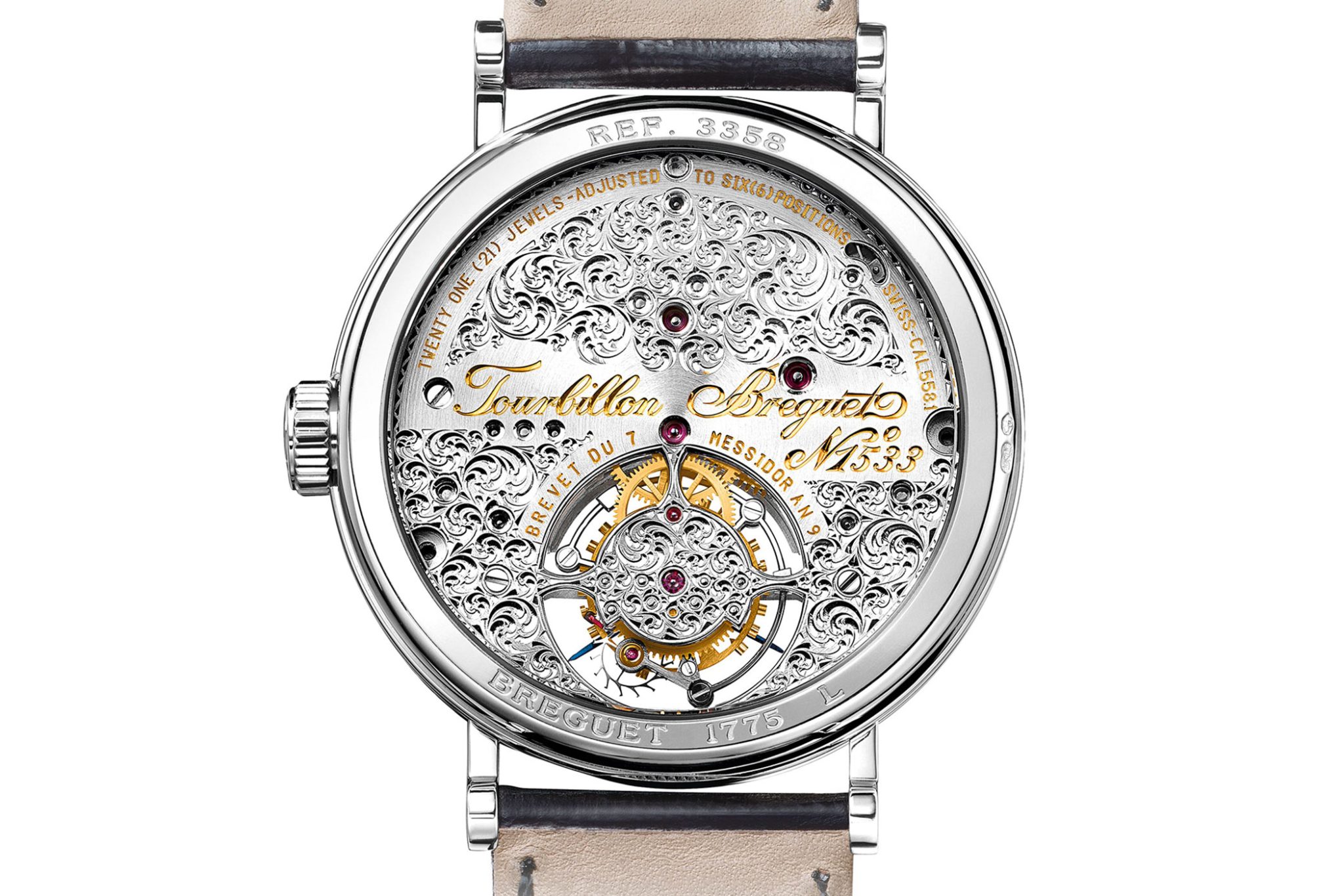
2005
Classique Tourbillon et Réserve de Marche 5317
Two years later, Breguet brought out the 5317, this time with an automatic movement. Crafted in yellow gold, rose gold or platinum, its silvered 18-carat gold dial, engine-turned by hand, has a conventional hobnail pattern. While the tourbillon is again at 6 o’clock, this time, a large power reserve indicator lies at 12 o’clock and showcases Breguet’s wave pattern finishing.
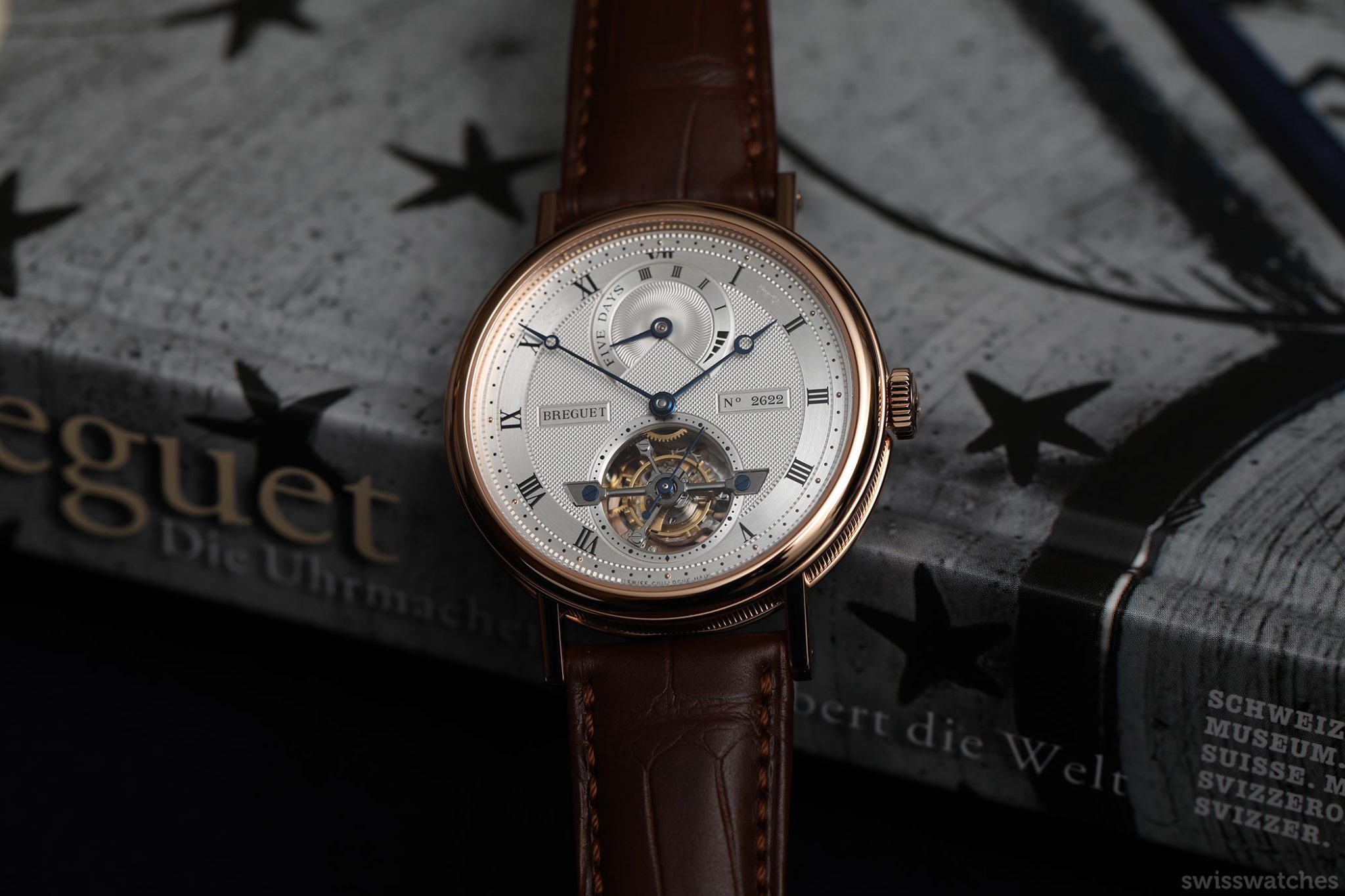
Once more, the model has a sapphire crystal caseback. This reveals the calibre 587DR with tourbillon, which has an impressive 120-hour power reserve. It also boasts an exquisite hand-engraved gold rotor. Breguet integrate a straight-line lever escapement alongside a balance wheel on a Breguet spring. Additionally, the tourbillon movement is adjusted in five positions (with the significance of this explained earlier).
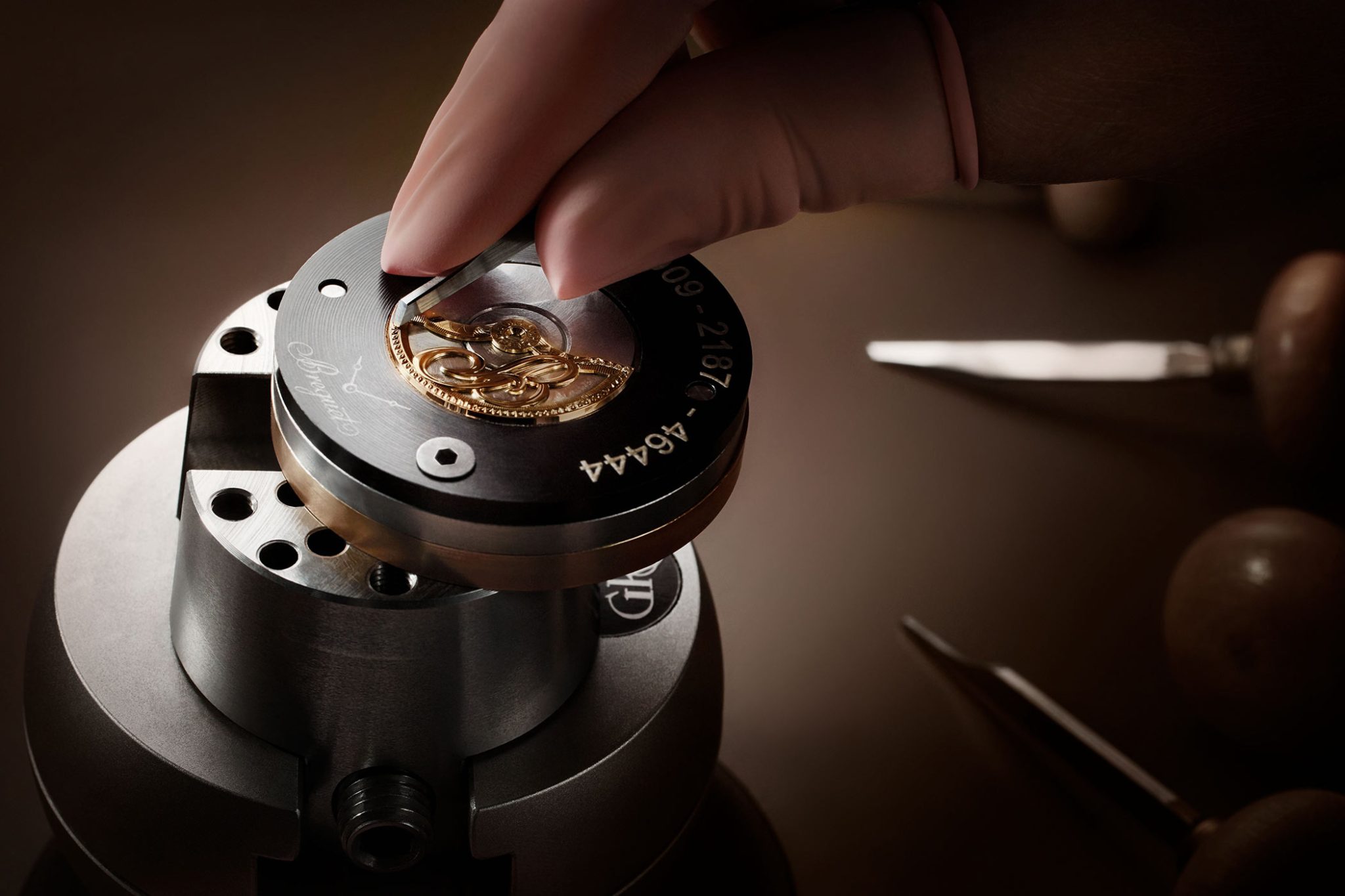
2006
Classique Double Tourbillon 5347
The very next year, we had Breguet’s release of the what is surely one of the most attractive and impressive tourbillons from the horology house, the 5347. Housed in a 44 mm pink-gold case, this model’s manual-winding movement integrated a pair of tourbillon regulators rotating on the hour axis. Consisting of over 570 components, the two tourbillons are coupled by means of differential gears and mounted on a rotating centre plate, effecting a complete revolution in twelve hours.
The differential device conveys the two tourbillons’ mean rate to the rotating centre plate and to the time-display mechanism. The rate of the watch is thus the mean rate of the two tourbillons, making its movement twice as precise as a normal one. Finally, the hour is shown by the bridge connecting the tourbillon regulators doubling as a watch hand, while the minutes are indicated by a standard hand at the centre. Breguet sure like to complicate things (we wouldn’t want it any other way).
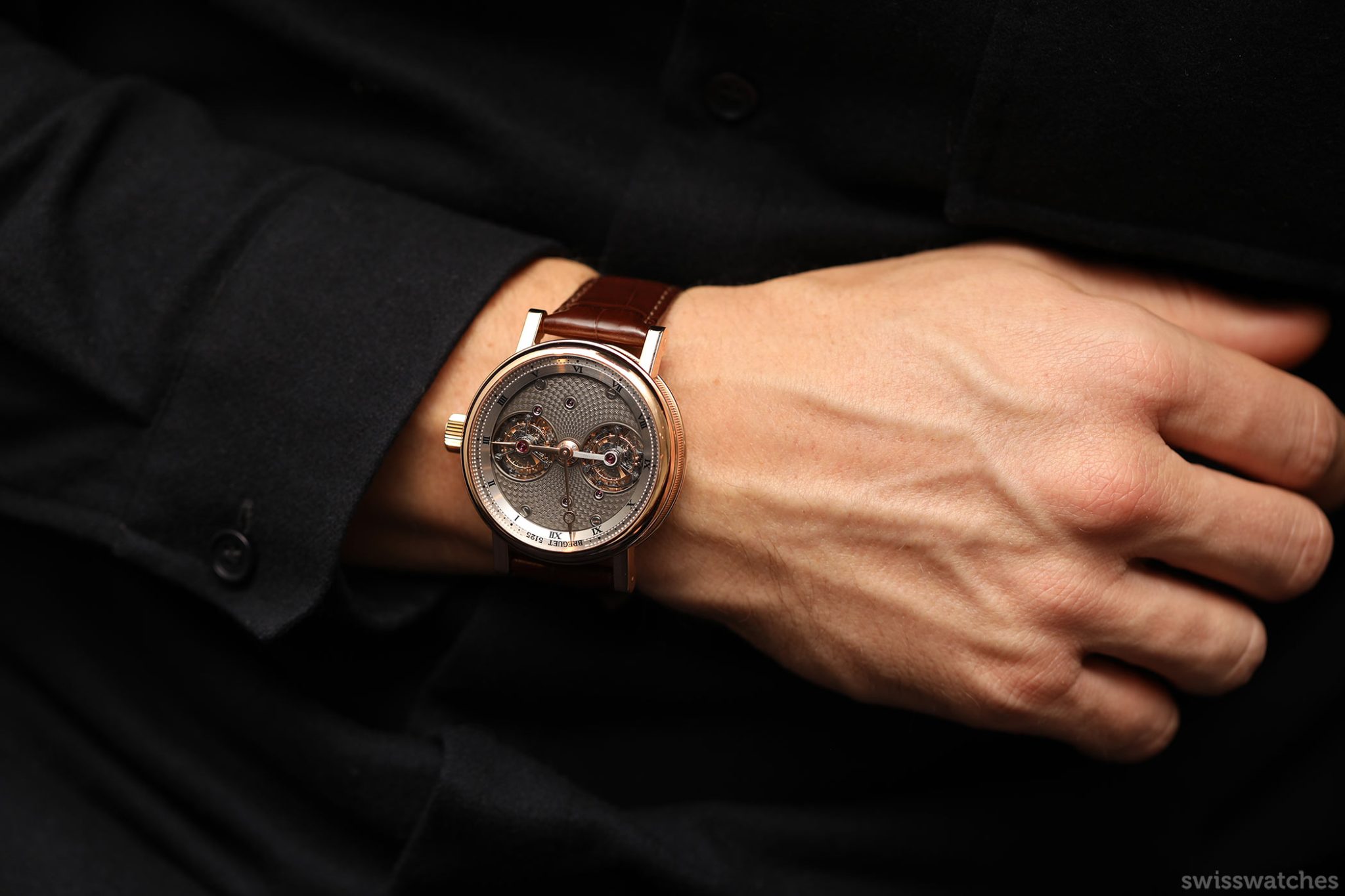
2007
Classique Grandes Complications Tourbillon Messidor 5335
Introduced at Baselworld in 2007, the rose-gold Classique Tourbillon Messidor pays tribute to the time when Breguet patented his invention on June 26, 1801 – or, according to the French Revolutionary calendar, on 7 Messidor Year IX. Returning to a manual winding movement, the watch bears all to the wearer with its open-worked construction. The skeletonised calibre 558’s tourbillon with running seconds lies at 6 o’clock, with two sapphire crystals supporting the tourbillon shaft.
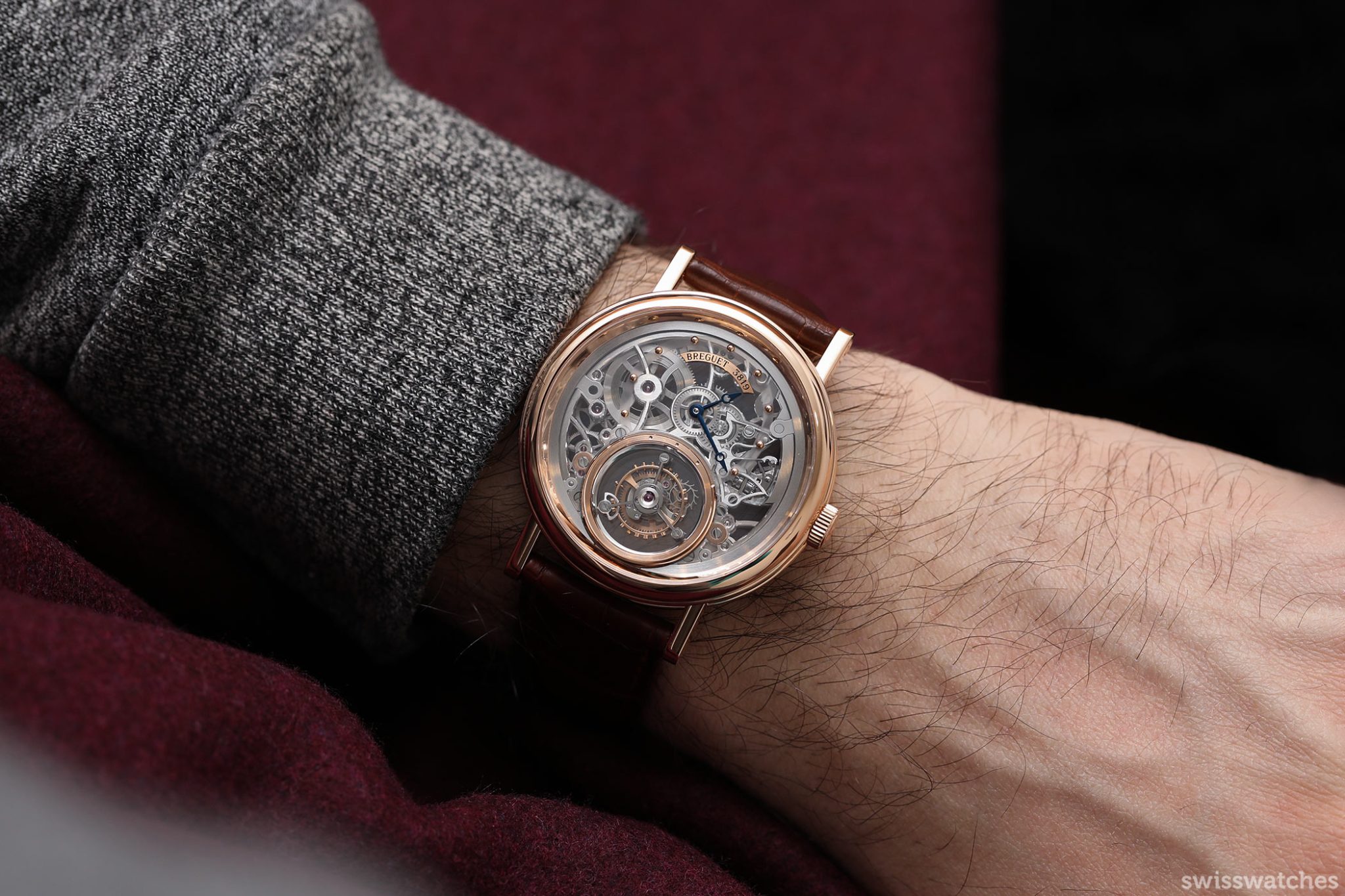
2008
Héritage 5497
The launch of this tourbillon marked the very first major complication to appear in the Héritage collection. Unlike the round cases of the tourbillon watches so far, this one appears in a tonneau case, curved in two axes. The calibre 187H (an amended version of the basic Breguet calibre 187) powers the tourbillon lying at 6 o’clock (as indicated also by the ‘VI’ tourbillon-barrette). As well as using the Breguet overcoil and lever escapement (on the side), it is adjusted in six positions.
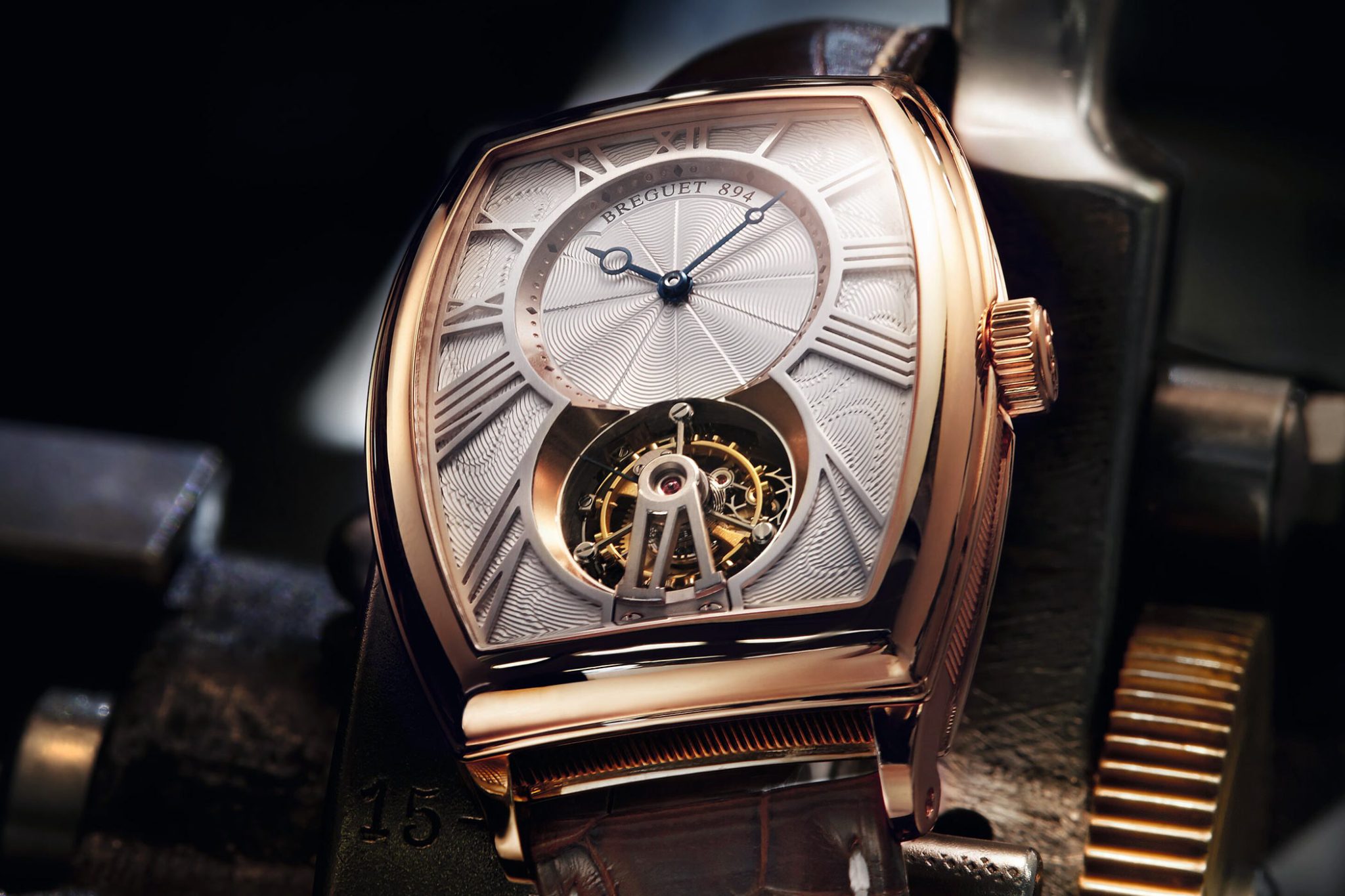
2010
Tradition Tourbillon Fusée 7047
Another key piece in the history of modern Breguet tourbillon watches, this contemporary looking Tradition model is also quite something else. Taking things up a level, coming in a 950 platinum case, the 41 mm watch relocates its 60-second tourbillon to 1 o’clock.
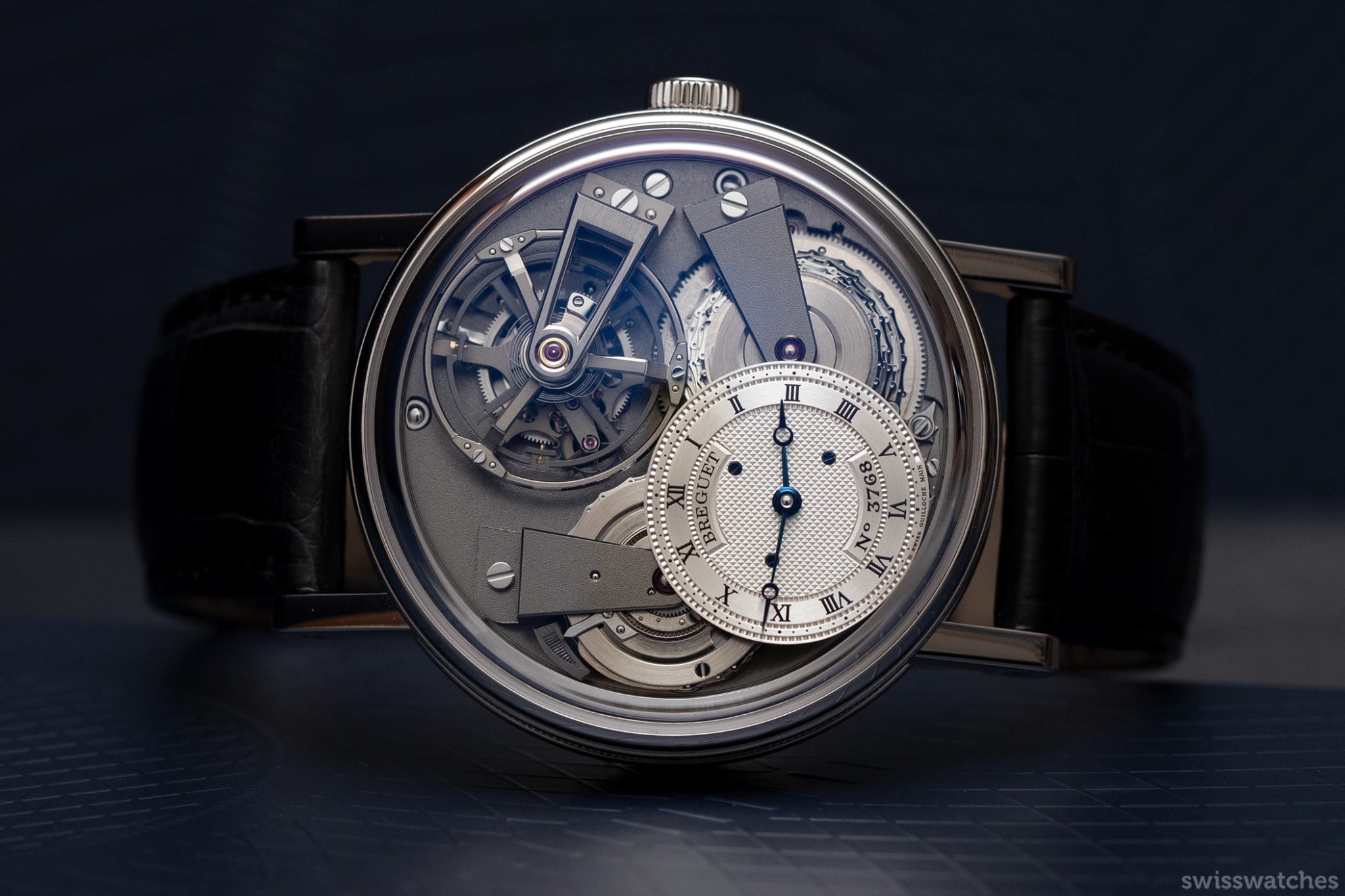
Meanwhile, the manual-winding movement is clad in an anthracite-grey alloy of platinum-group metal. Its barrette (the thin bar), upper bridge and carriage all derive from Abraham-Louis Breguet’s earliest sketches. Fitted with a patented modern Breguet balance made of titanium, the balance spring is fitted in silicon. Additionally, the power reserve of the calibre 569 lies on the barrel drum.
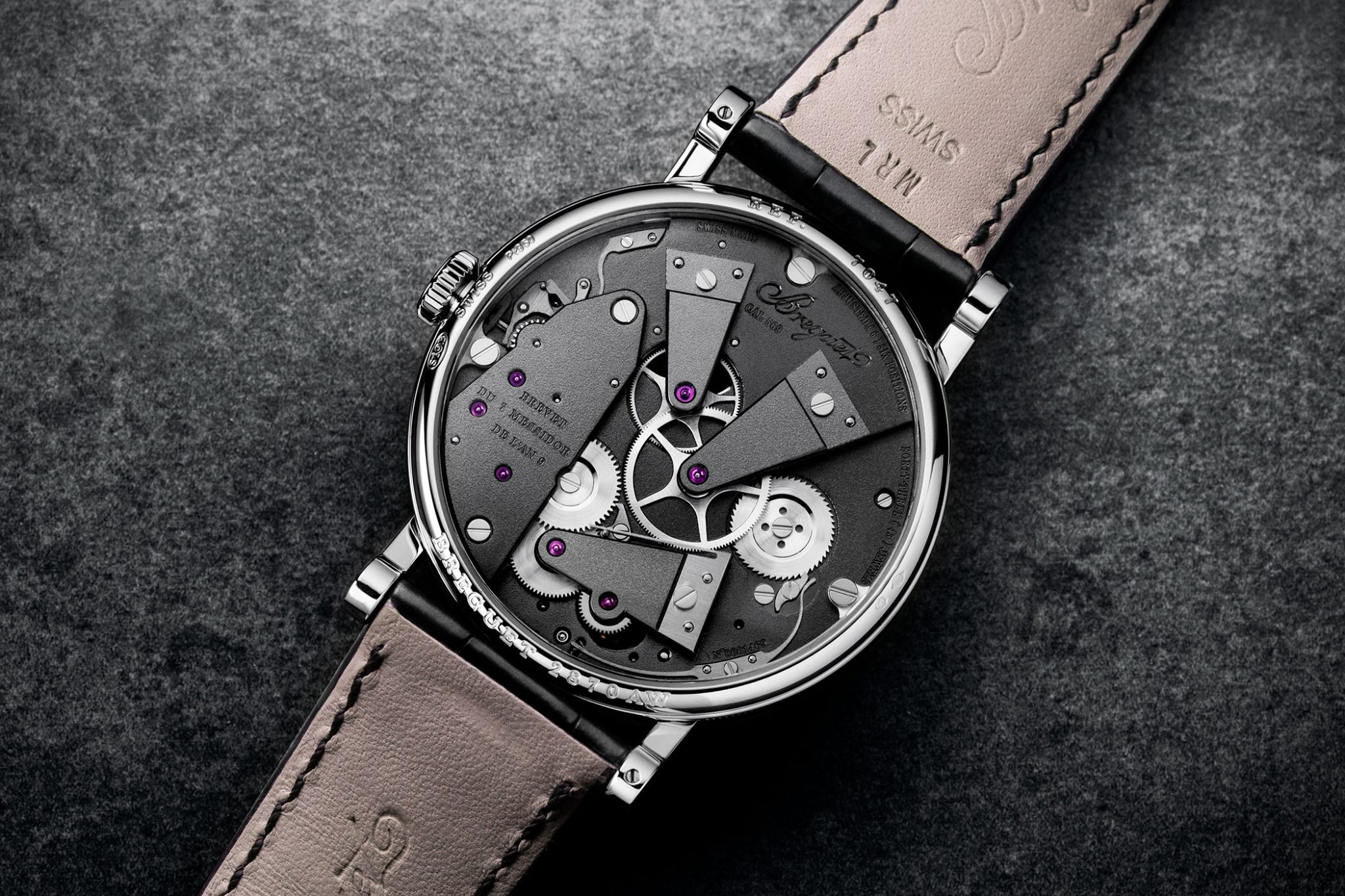
2014
Classique Tourbillon Extra-Plat Automatique 5377
Breguet dialled things up in 2014, a year which saw the introduction of three new Classique tourbillon watches. The Extra-Plat showcases horological skill from start to finish. Most importantly for us, it features an off-centred tourbillon, within which the light titanium carriage carries a Breguet balance with a silicon balance spring, plus a specially developed escapement. This tourbillon is set with a single blue sapphire.
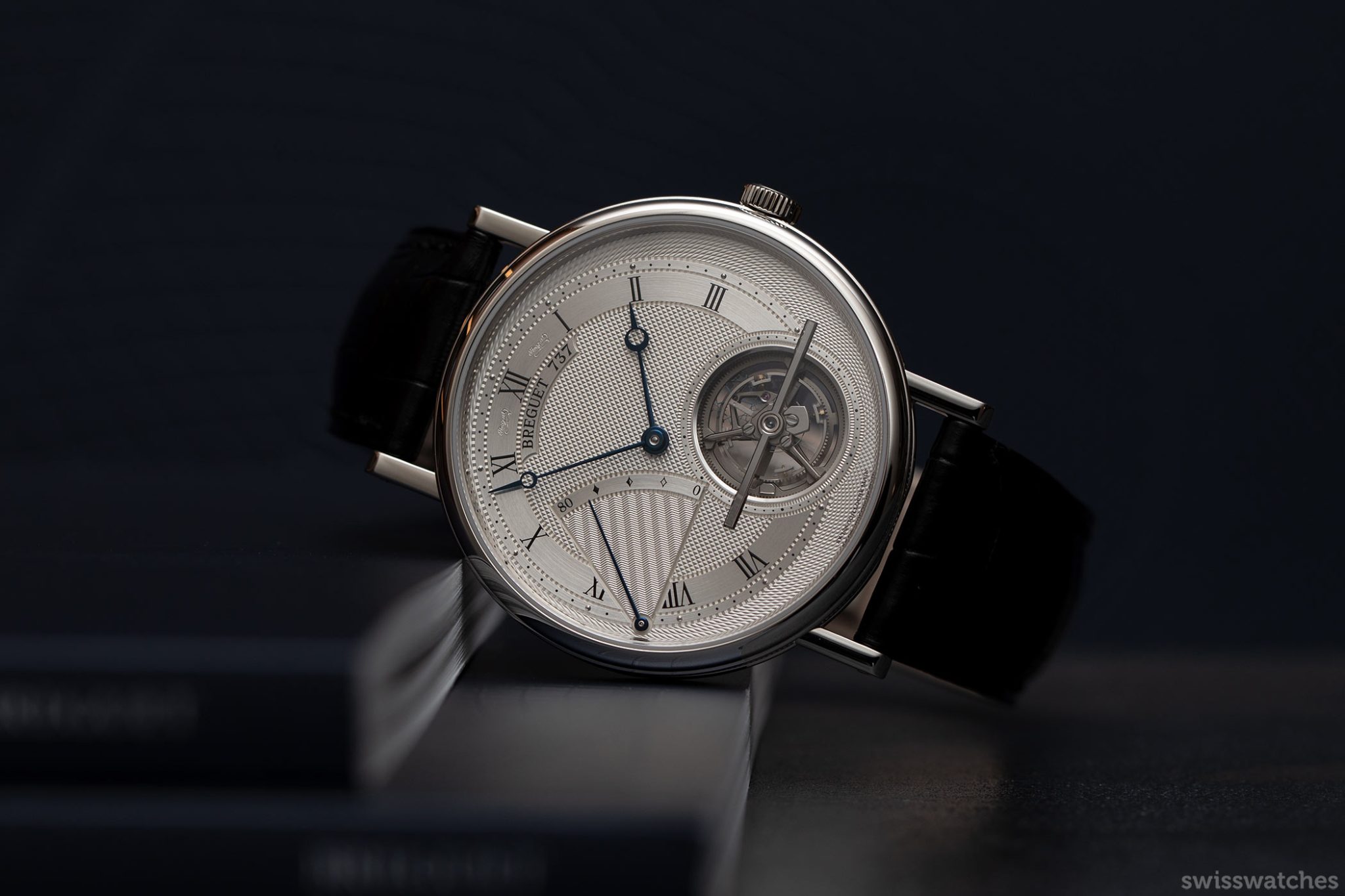
What’s more, the calibre 581DR movement provides a frequency of 4 Hz – this is actually high for a tourbillon balance. Meanwhile, the patented high-energy barrel provides a power reserve of 80 hours. Despite its complexity, the movement measures a mere 3 mm, featuring a special platinum peripheral, winding in both directions. The decoration is also on point, showcasing four different engine-turned patterns, from a Clous de Paris hobnail pattern, to an adjacent barleycorn motif, to engine-turned strait chevrons, to cross-hatched borders.
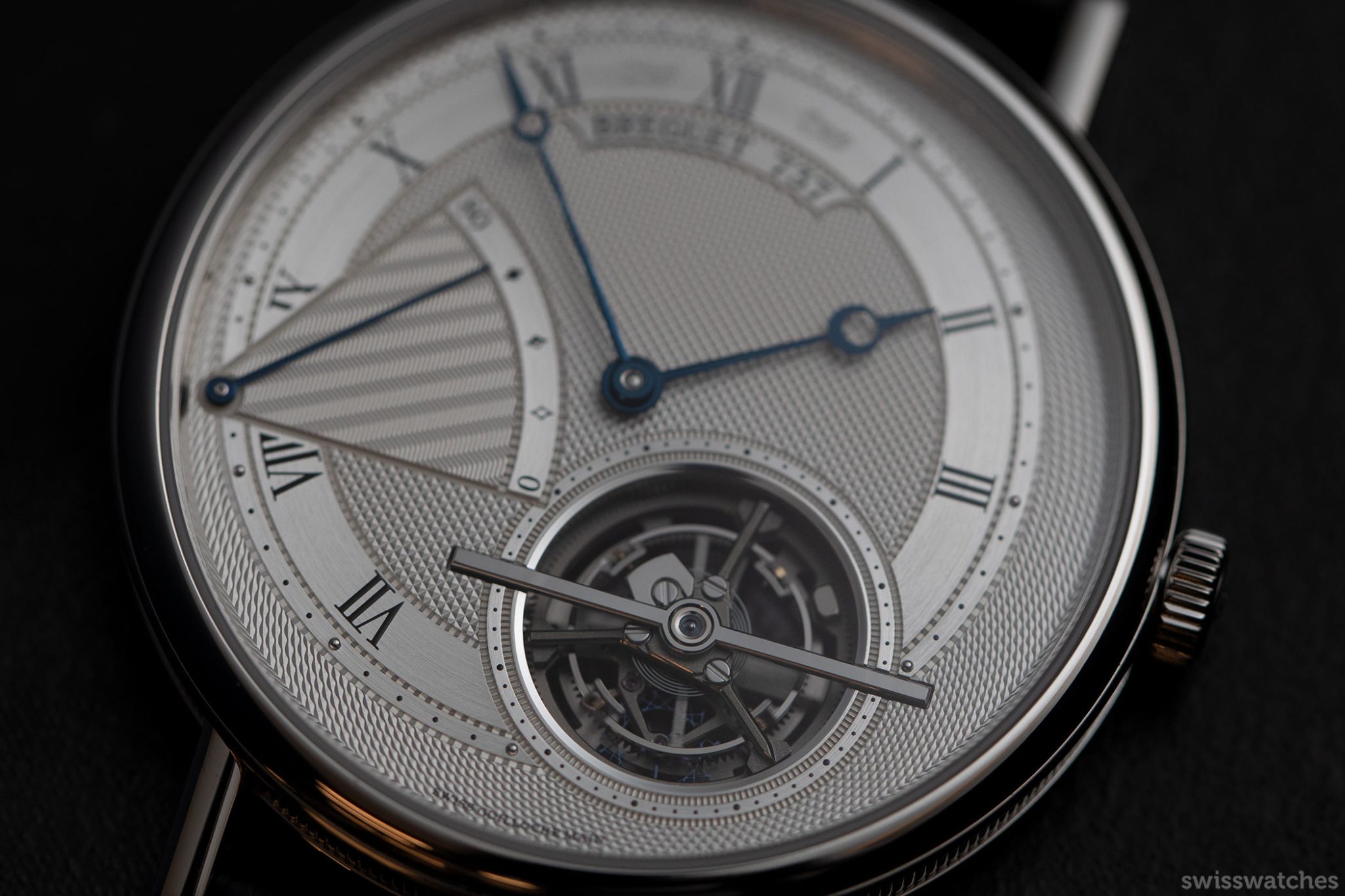
Classique Tourbillon Quantième Perpétuel 3795
Baselworld 2014 also saw the introduction of the something else quite amazing: the complex Classique Tourbillon Quantième Perpétuel 3795. While the Classique collection was already home to perpetual calendar models, the aim of this platinum edition was to also bring some haute couture to the table. The skeletonised model integrates a one-minute tourbillon at 6 o’clock, with small seconds displayed on its axis.
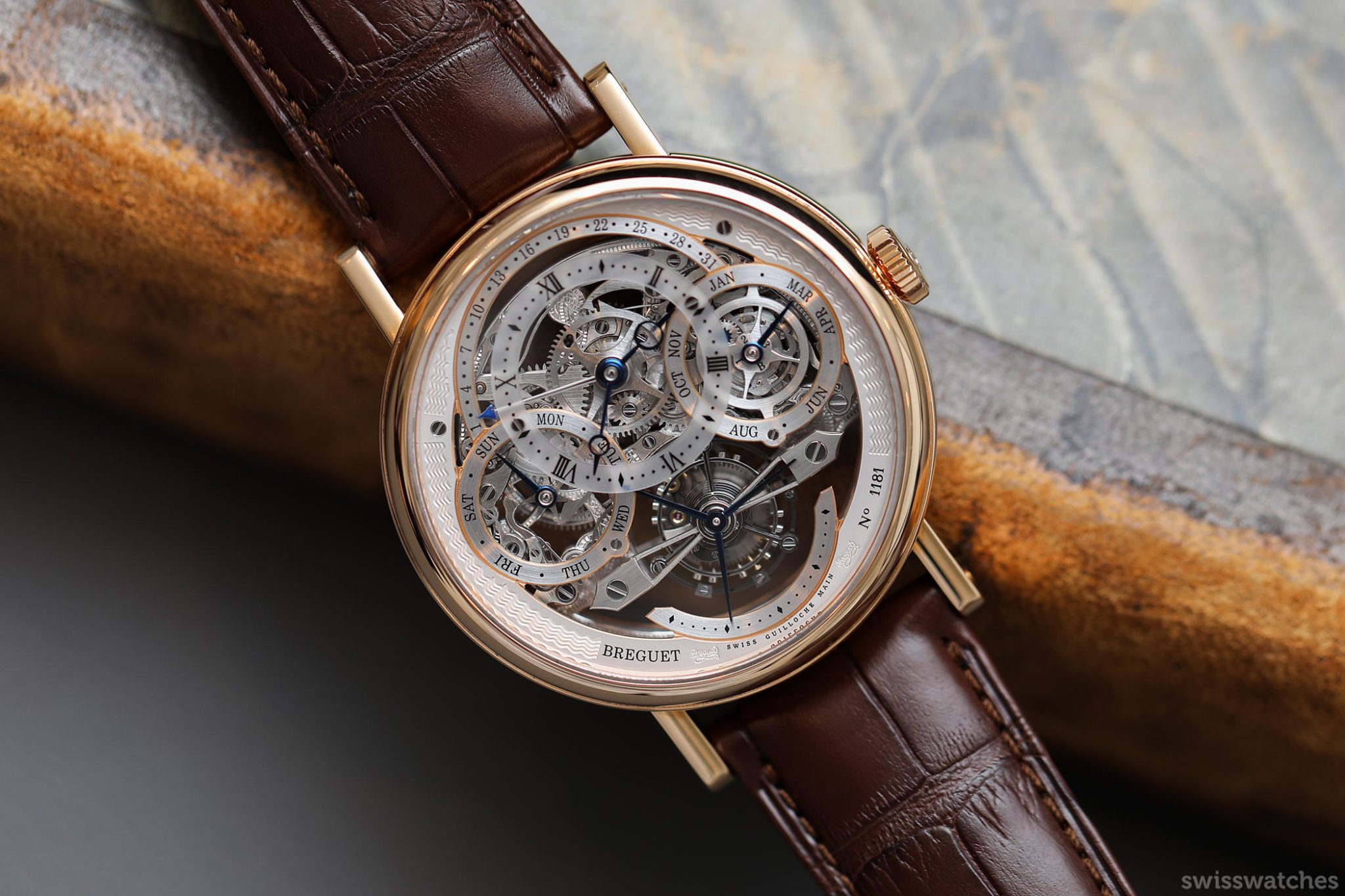
The movement, visible via the caseback, has an intricate design; a snail cam makes the days hand jump instantaneously; the baseplate’s architecture directs the maximum amount of light onto the tourbillon. The calibre 558QP3 integrates a lateral lever escapement, plus a balance with adjustment screws on a Breguet spring.
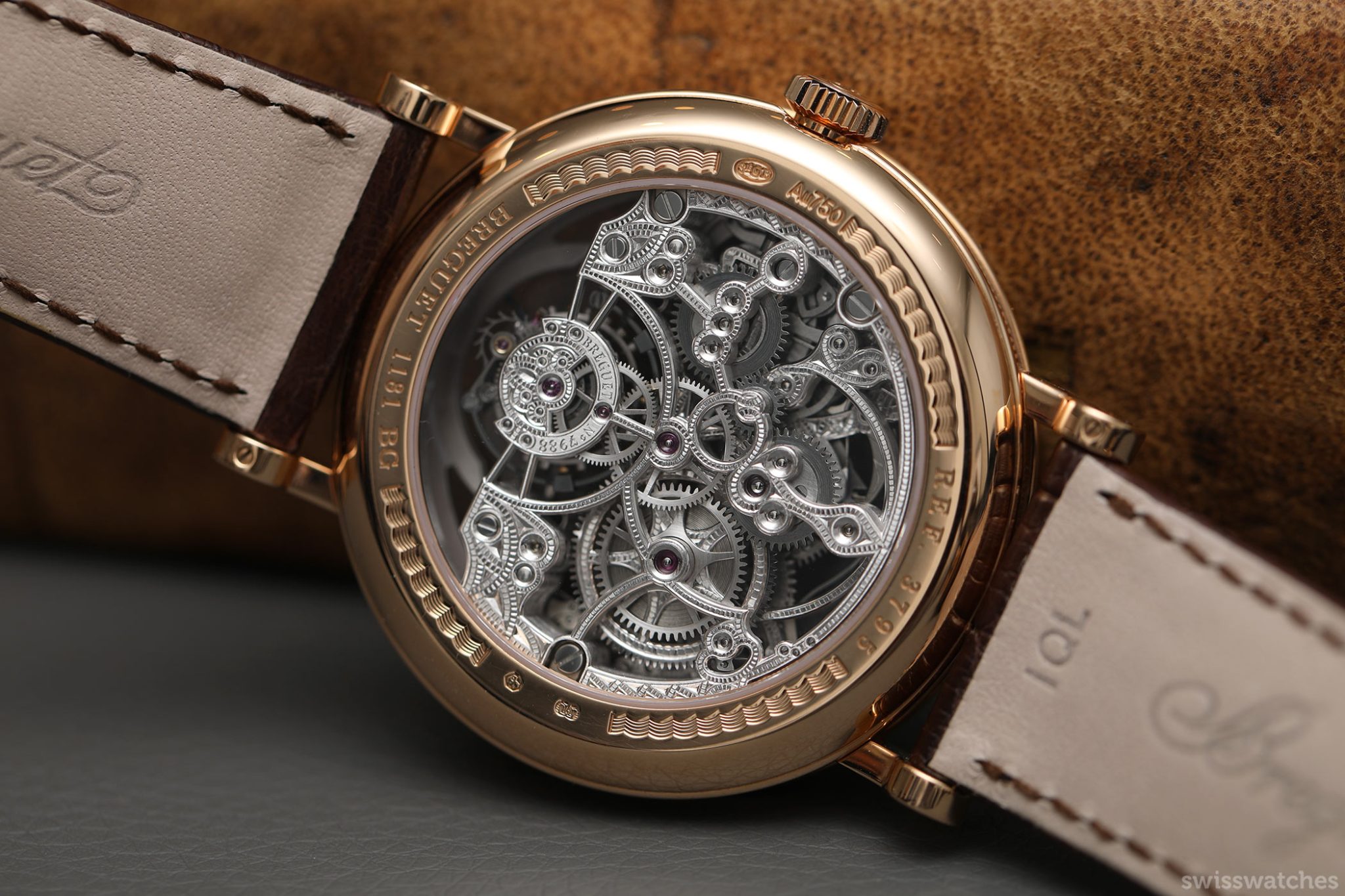
Classique Tourbillon Quantième Perpétuel 3797
Breguet also produced a sibling to the 3795 which is not skeletonised, and uses different materials. The 18-carat rose gold watch’s 18-carat gold silvered dial is, like the 5377 from the same year, engine-turned in four different patterns. With the same layout as its sibling, it displays the retrograde dates indication at 12 o’clock, days at 9 o’clock, plus months and leap years at 3 o’clock. Meanwhile, the tourbillon axis provides the small seconds. This time, powering the watch is the calibre 558QP2.
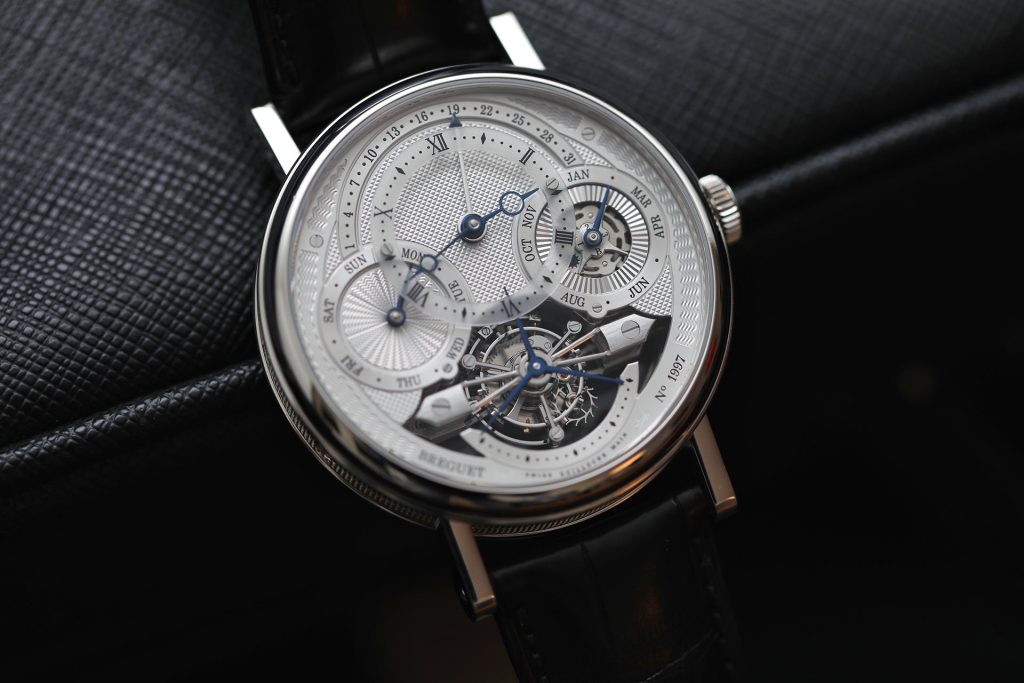
Also, to keep things legible on a watch that can easily get complicated, maison Breguet changed the design on the tourbillon model by adding a third dimension. By lifting the hours and minutes chapter to the foreground, the watch first and foremost shows the essential information, while a closer look is needed to view the other indications. This is also thanks to the addition of the watch’s offset sapphire disc.
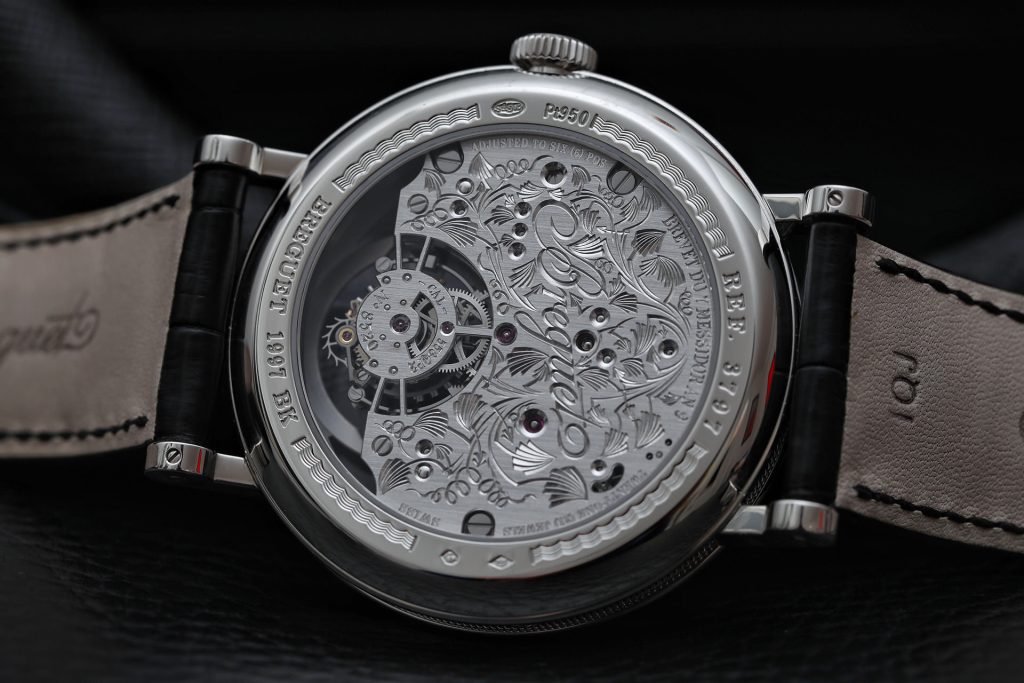
2017
Marine Équation Marchante 5887
As discussed earlier, Abraham-Louis Breguet had a number of clients interested in his marine chronometers – including those with tourbillons. In 1815, Breguet was even bestowed the title of chronometer maker to the French Royal Navy by Louis XVIII. This title, as hinted at as we got to know Breguet’s own tourbillon pocket watches, essentially marked out Breguet himself as a scientist. Thus, it is no surprise that the horology house of today chose to integrate a grand complication tourbillon model into its Marine collection. This marked the start of a new direction for the evolving Marine line.
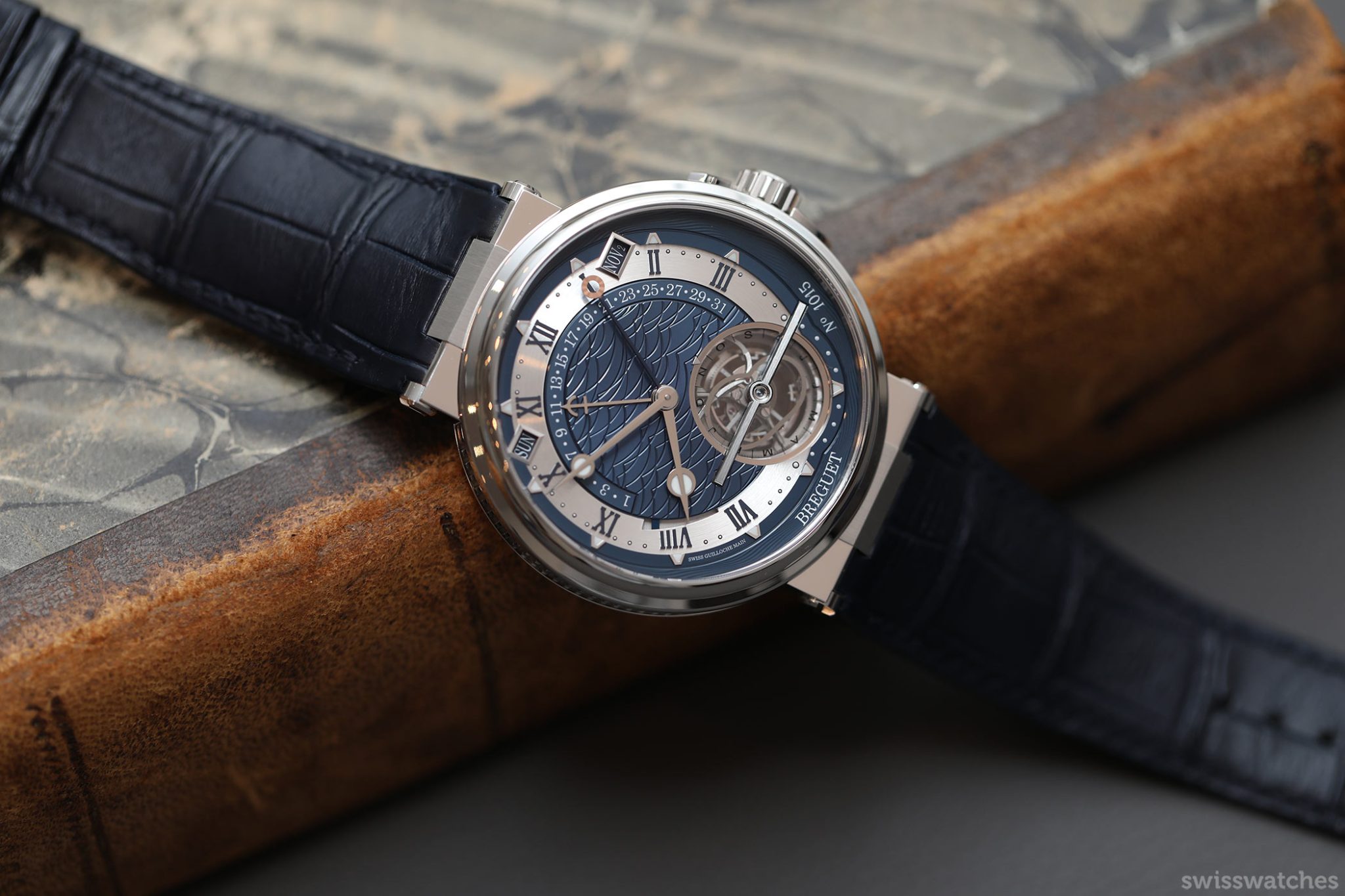
The 5887 with a blue dial and platinum case is home to not only a tourbillon, but also a perpetual calendar and equation of time. At the heart of the movement is a cam on a sapphire disc that completes a full rotation per year, duplicating the equation of time cycle. The mechanism is completed with a set of gears called a ‘differential’.
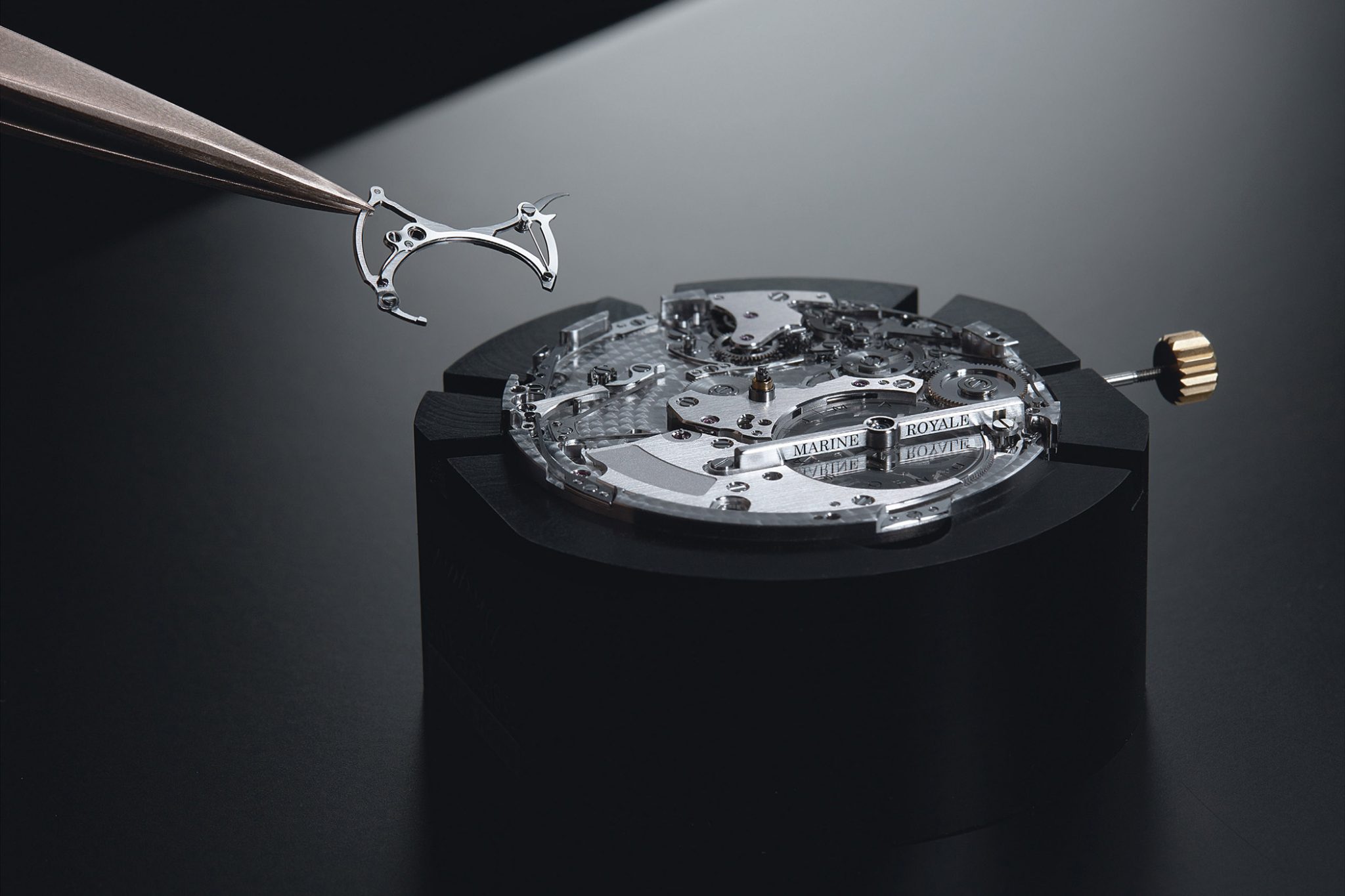
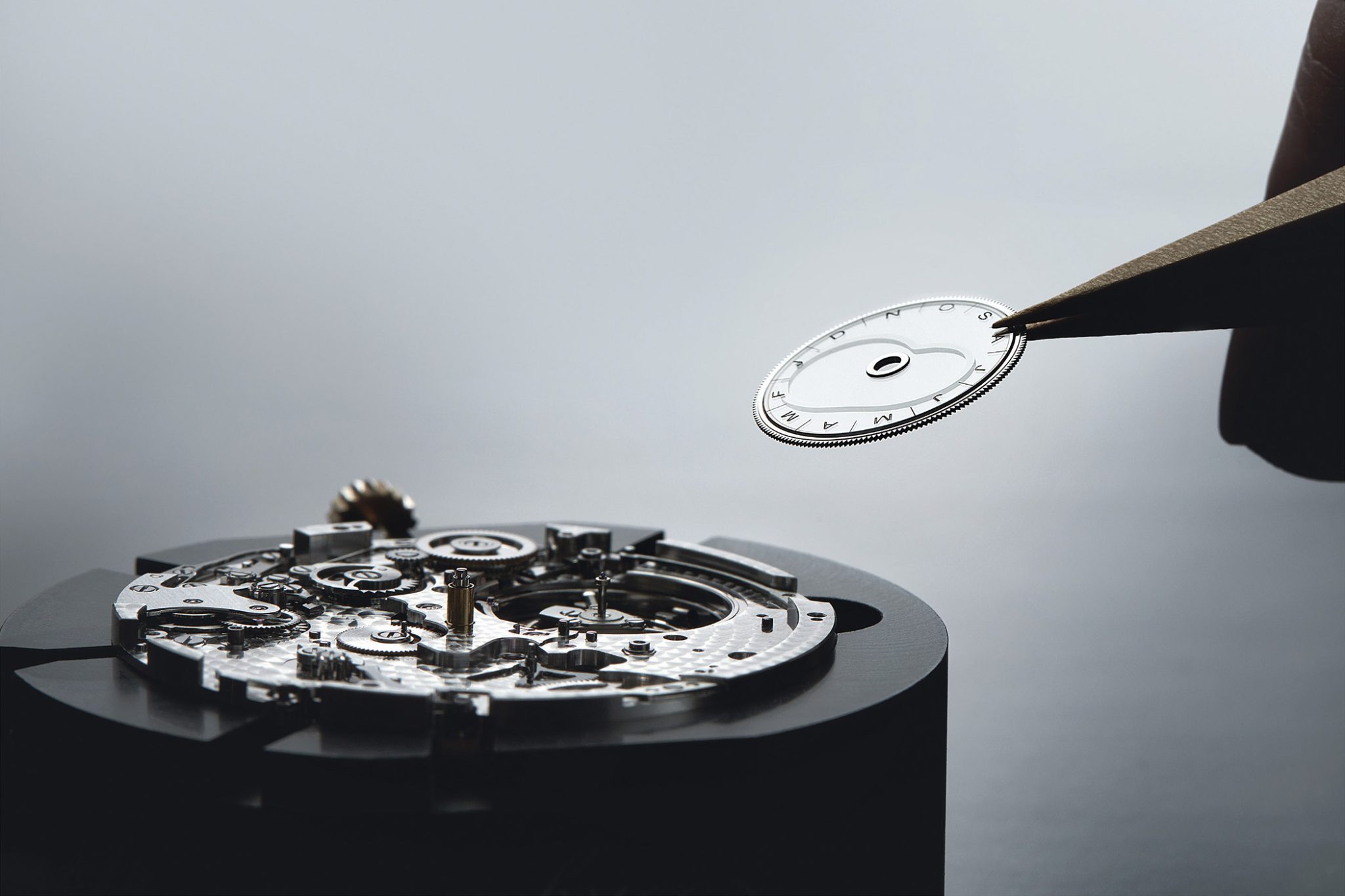
What’s so special about the differential is that it is able to combine two separate inputs into one output. The civil (local) minute indication is produced by the main gear train of the watch. The equation of time information is read by the finger following the cam’s form. Thus, the differential performs the formula for calculating solar time (civil time plus equation of time), which is displayed by the solar minute hand. Powering the model is the calibre 581DPE. There’s no doubt that it’s a very complicated watch indeed – its 2020 successor comes in a rose-gold case with a brown dial.
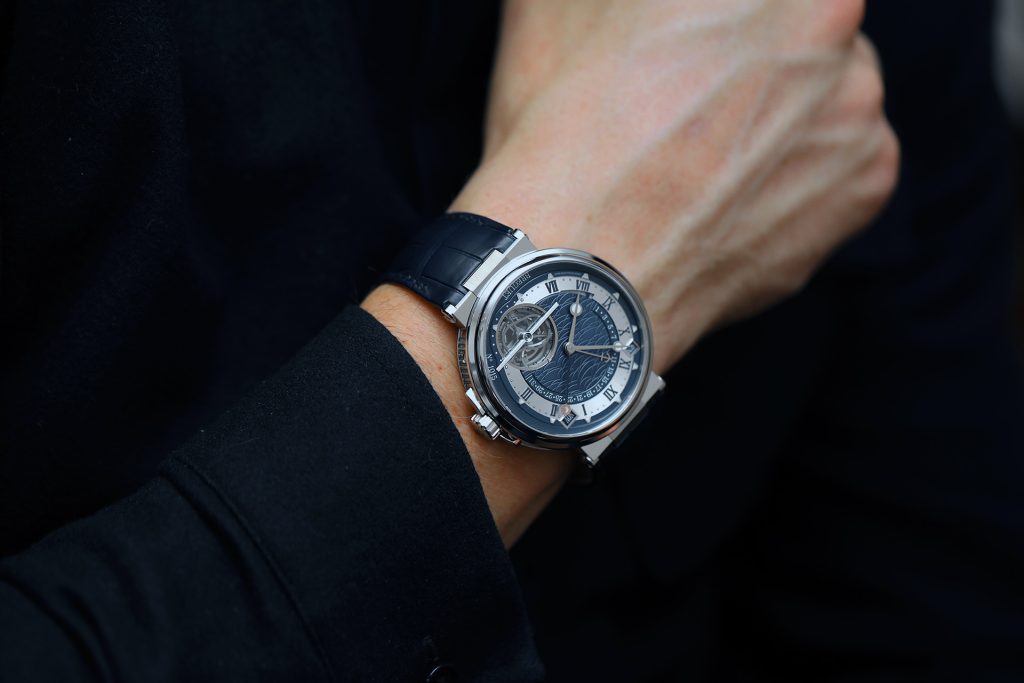
2018
Classique Tourbillon Extra-Plat 5367
The 5367 is known best for introducing a new first to the modern Grandes Complications watches by Breguet, featuring a Grand Feu enamel dial. In comparison to the majority of the other watches thus far, this one is rather minimalist. It features only Breguet numerals, a stunning yet subtle decorative minute track, and a tourbillon at 5 o’clock. This allows the blued steel pomme hands to stand out nicely. The display layout is reminiscent of the Abraham-Louis Breguet’s own watches, with the master watchmaker taking inspiration from the aesthetic conventions governing the artistic scene of his time.
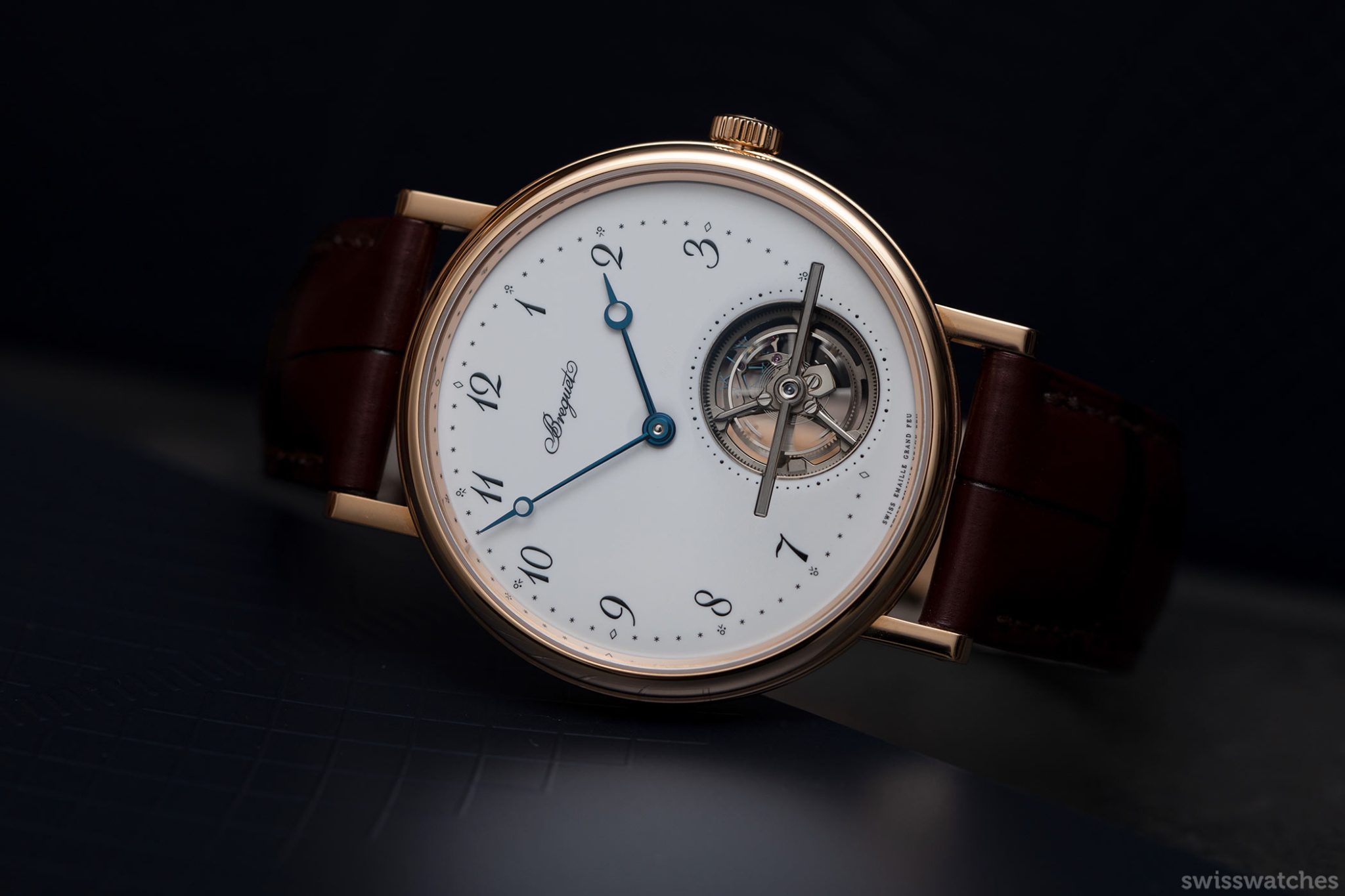
Turning the watch over, however, we have a different story, with a highly decorated calibre 581. The bridges, barrel and oscillating weight are hand-engraved. Crafted in platinum for greater inertia, the latter rotates on the periphery of the calibre provide a clearer view of the movement and ensure its slimness. After all, this ‘low-key’ Breguet tourbillon watch measures a mere 7.45 mm thick and its movement just 3mm.
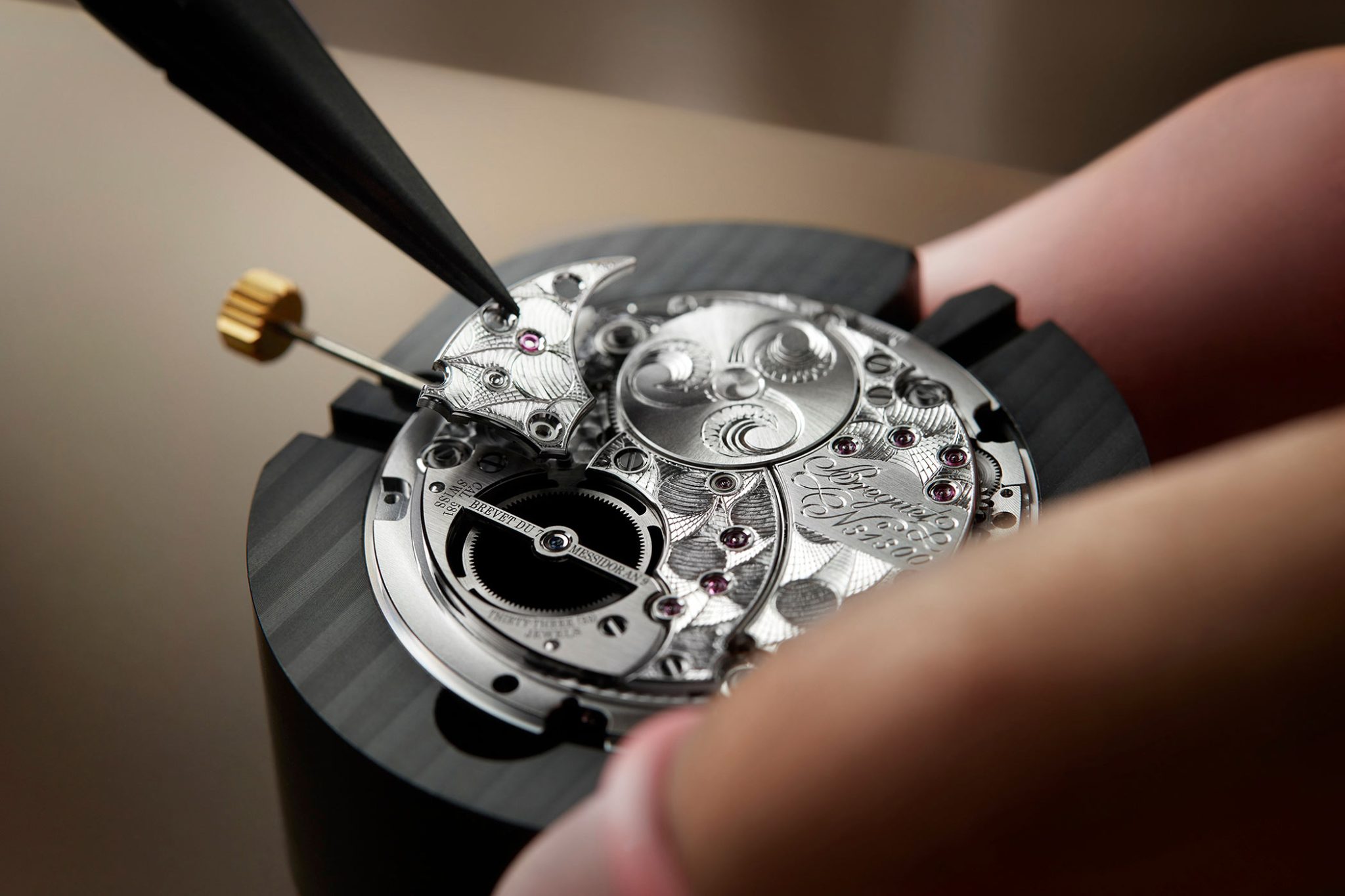
2019
Classique Tourbillon Extra-Plat Squelette 5395
With this ultra-thin 5395 model, Breguet presented a watch that stunned many. Once again, we have a model powered by the calibre 581 in 18-carat gold, which, despite including a tourbillon, measures a mere 3 mm high. This time, Breguet also chose to skeletonise the movement. To keep the movement slim, the watchmaker chose to place the rotor on the periphery of the plate. The tourbillon’s titanium carriage engages directly with the wheel train, instead of doing so via the intermediary of a pinion at its base. Furthermore, the distinct, angled shape of the silicon escapement allows the watch to save additional space.
Whats more, this platinum piece remains not to heavy thanks to its incredibly light movement, with the weighing only 0.290 grams. Nevertheless, as with the 5367 model, the high-energy barrel beating at 4 Hz guarantees a power reserve of 80 hours. Visible via the caseback, Breguet also removed as much material as possible, with the gold plate and bridges also being skeletonised.
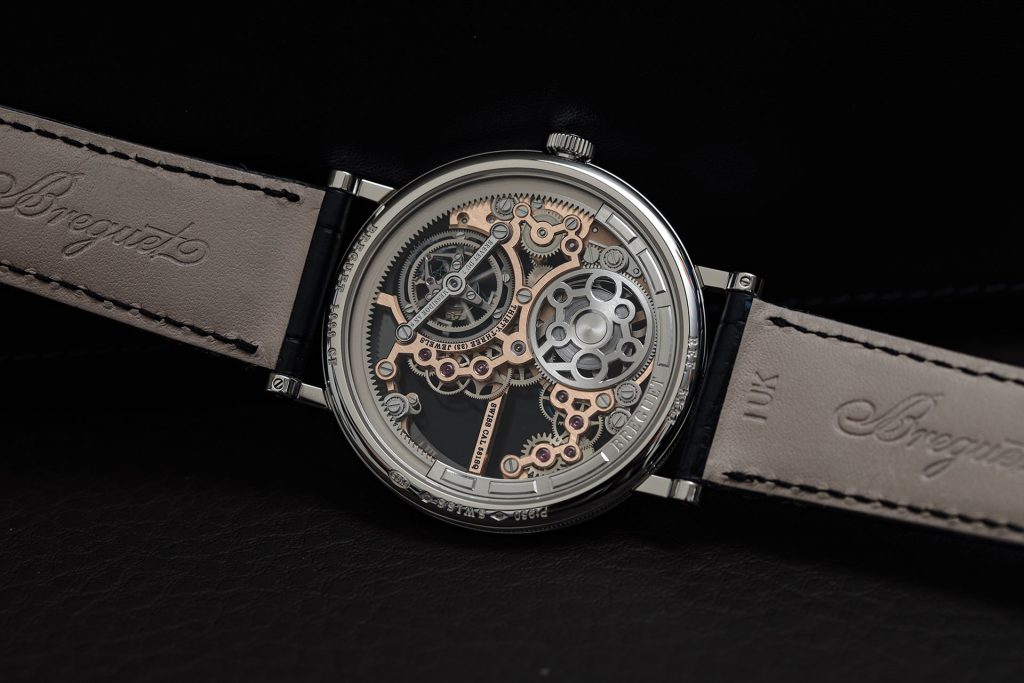
2020
Classique Tourbillon Extra-Plat Automatique 5367PT
This new version of the 5367, following on from the 2018 version, comes not in rose-gold, but this time in a platinum case. Once again, we see a Grand Feu dial – no longer a first. Creating such a dial, by the way, is a highly complicated process. It involves applying numerous layers of enamel at extremely high temperatures, to ensure durability and to achieve the desired colour. What’s more, many such dials will crack and need to be discarded in the process.
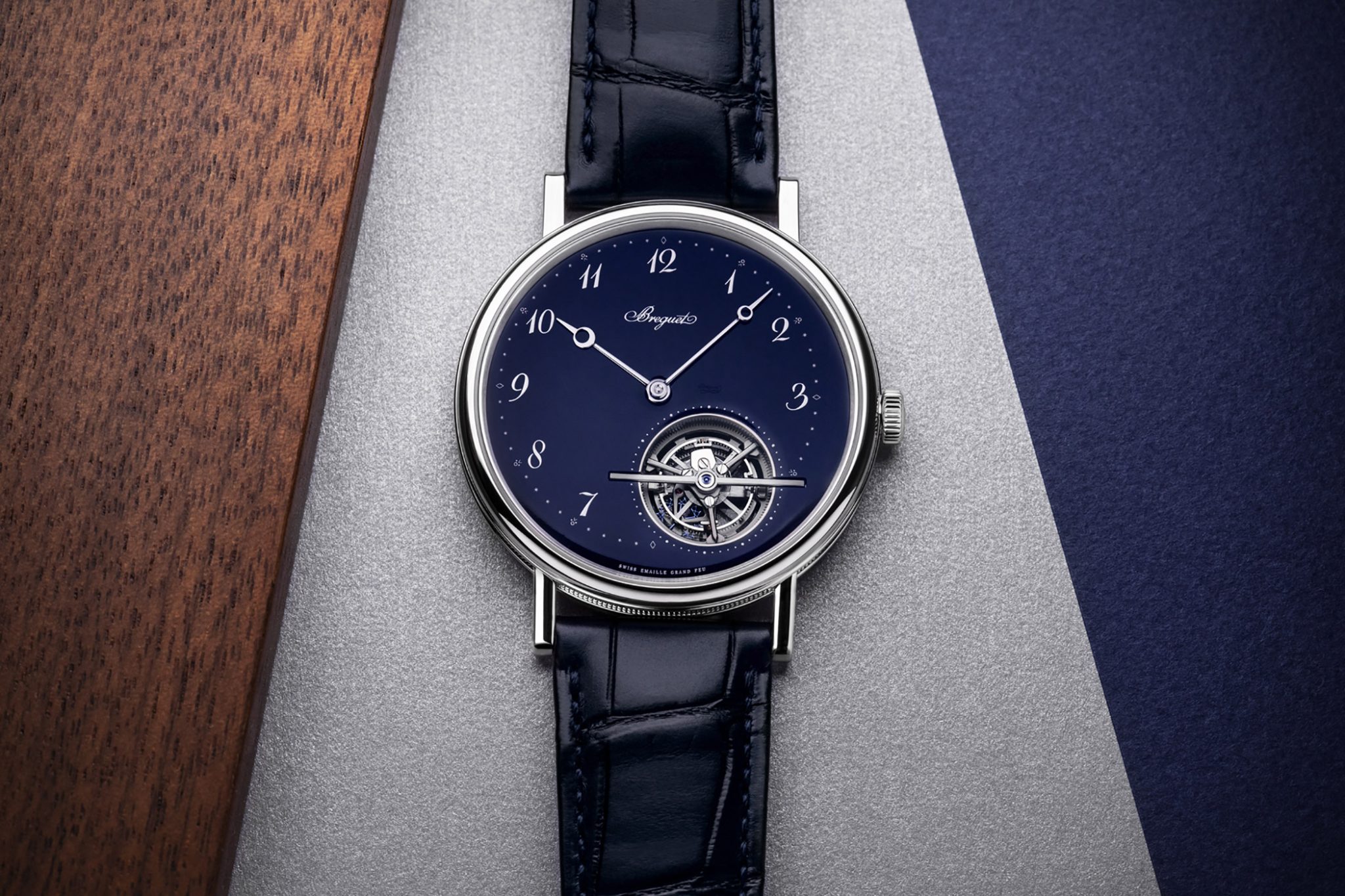
Powering the 41 mm watch is once again the automatic in-house calibre 581. As mentioned, at 3 mm, the movement is extraordinarily thin – in fact, it broke records as the thinnest calibre at the company. Like its sibling, the tourbillon itself is located in a titanium cage between 4 and 6 o’clock, driving the small seconds on the same axis. Inside the cage, the wearer can also observe the escapement and in-house silicon balance spring (oscillating at a rate of 4 Herz) at work.
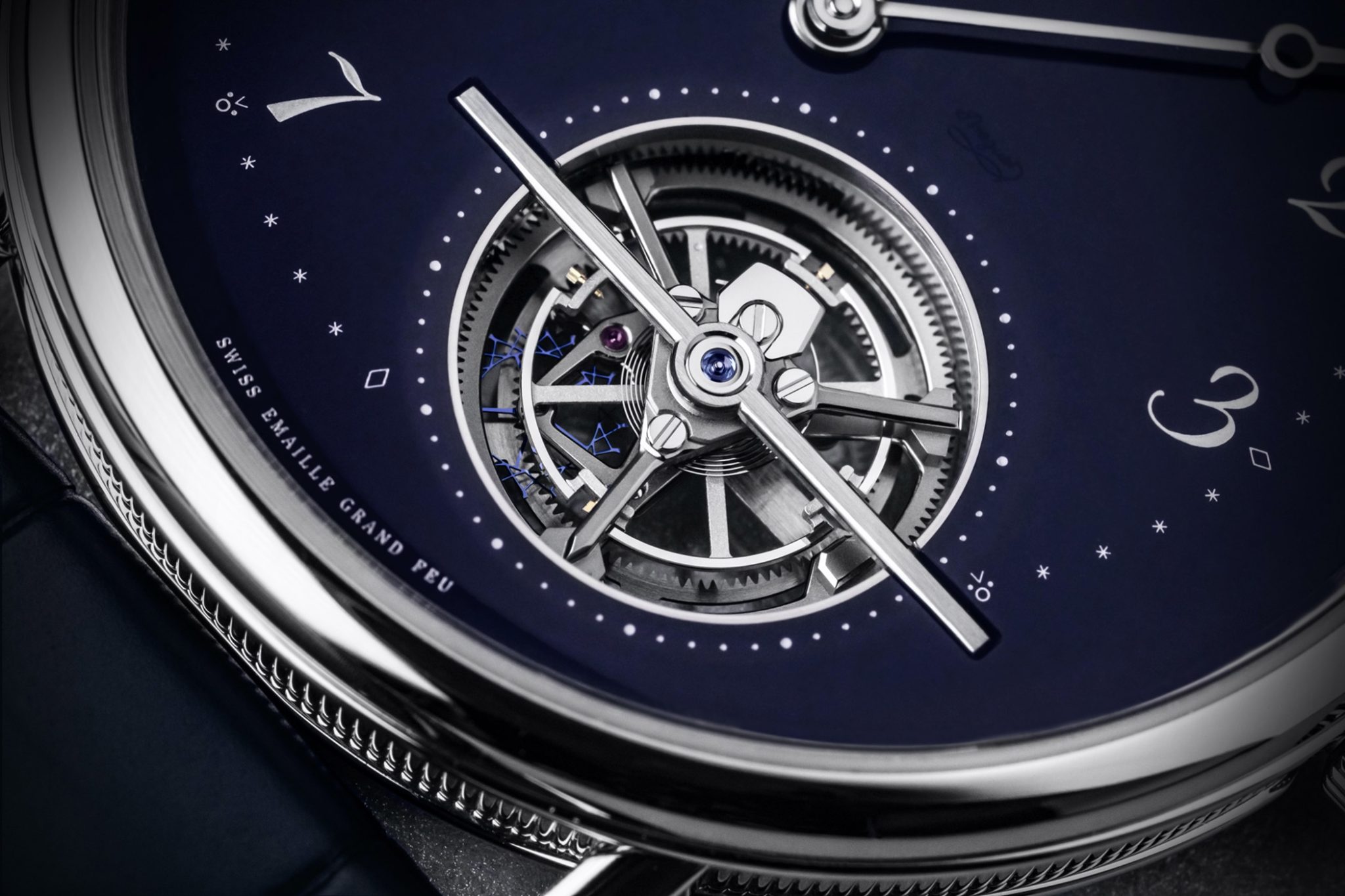
Again, the caseback reveals the exquisitely decorated movement. The introduction of the model is an indication of the power of Breguet’s tourbillon; from the front, the dial isn’t all about impressive Breguet-esque finishing – not to say the enamel isn’t exquisite. The minimalist piece, with its graphic hand-bevelled tourbillon bar, topped by a spinel, has all that this could ever need, and takes us back to some of the early tourbillon pocket watches from Abraham-Louis Breguet himself.
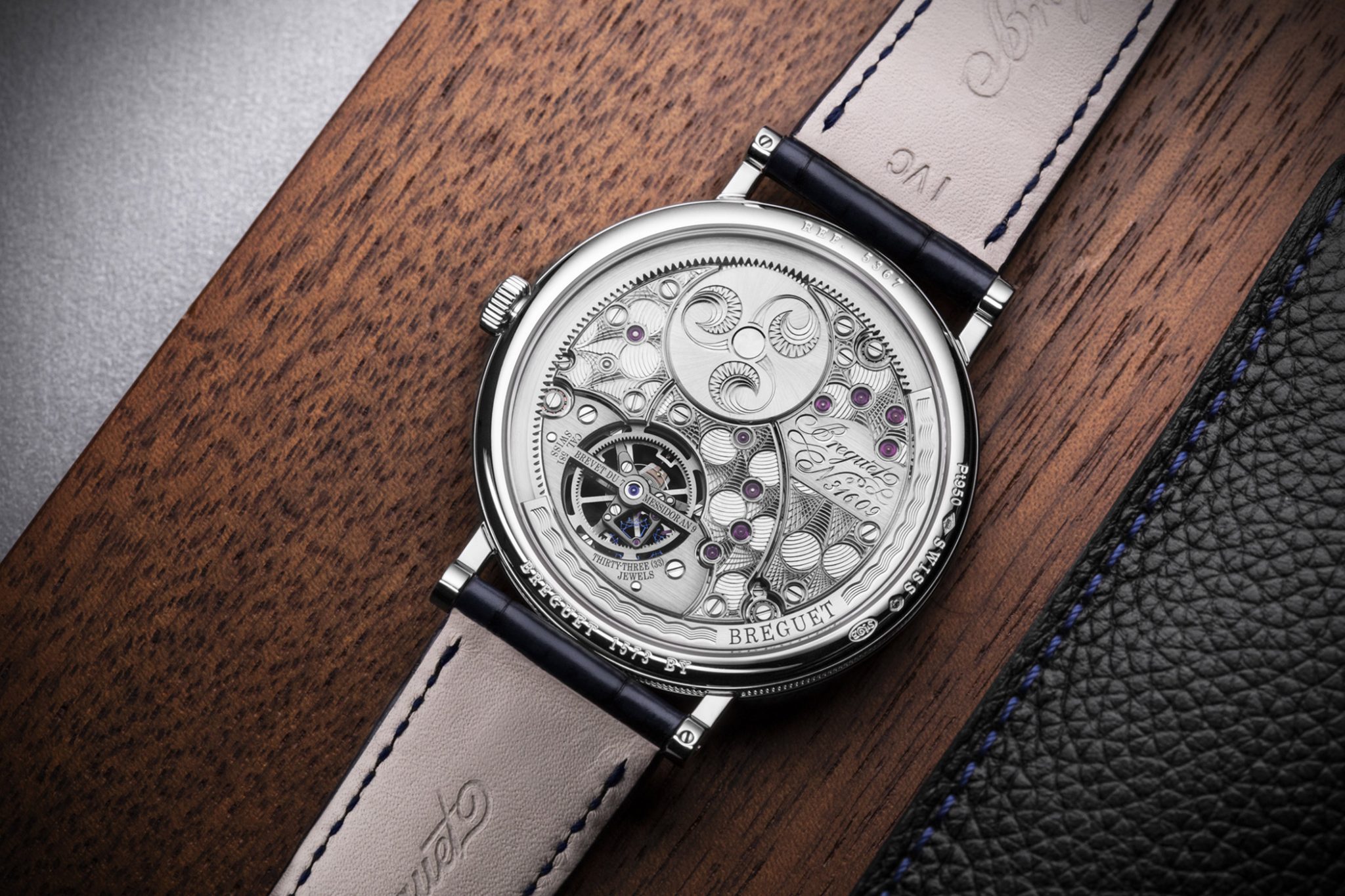
Classique Double Tourbillon 5345 Quai de l’Horloge
This piece pays homage, of course, to 39 Quai de l’Horloge, Paris. Thus, the caseback showcases Abraham-Louis Breguet’s former place of work from 1775 onwards with a filigree engraving of the building. The platinum watch, measuring a vast 46 mm, has a high, domed sapphire crystal protecting the dial, in order to allow for lateral transparency. After all, there’s a lot to admire.
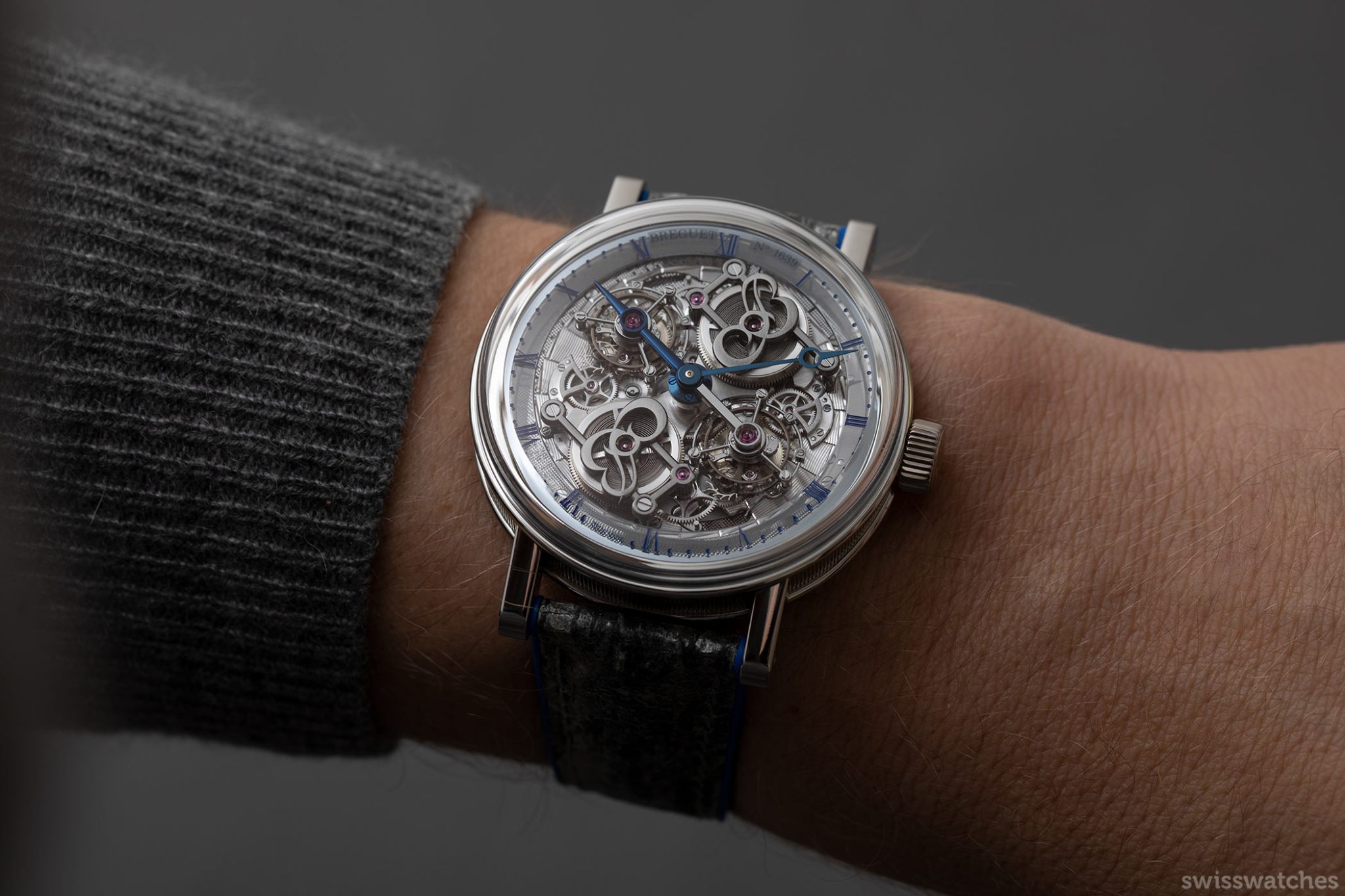
The dial is, in fact, a sapphire crystal ring accompanied by an hour circle with Roman numerals. A pomme Breguet minute hand in blued steel indicates the minutes from the centre, while a blue hour hand is in fact the fixed extension of the bridge of the two tourbillons, moving along the central axis of the watch along with the entire plate across 12 hours.
The duo of tourbillons rotate once a minute on their own axis. Meanwhile, their black polished stainless-steel cages beat independently of each other and have their own mainspring barrel. The manual-winding movement making all this possible is the manual winding calibre 588N. Breguet fit one of its two barrels with a friction bridle so that the spring disengages until the second spring is fully wound. The two steel balance springs feature the so-called Breguet overcoil, which allows the spring to extend and contract concentrically.
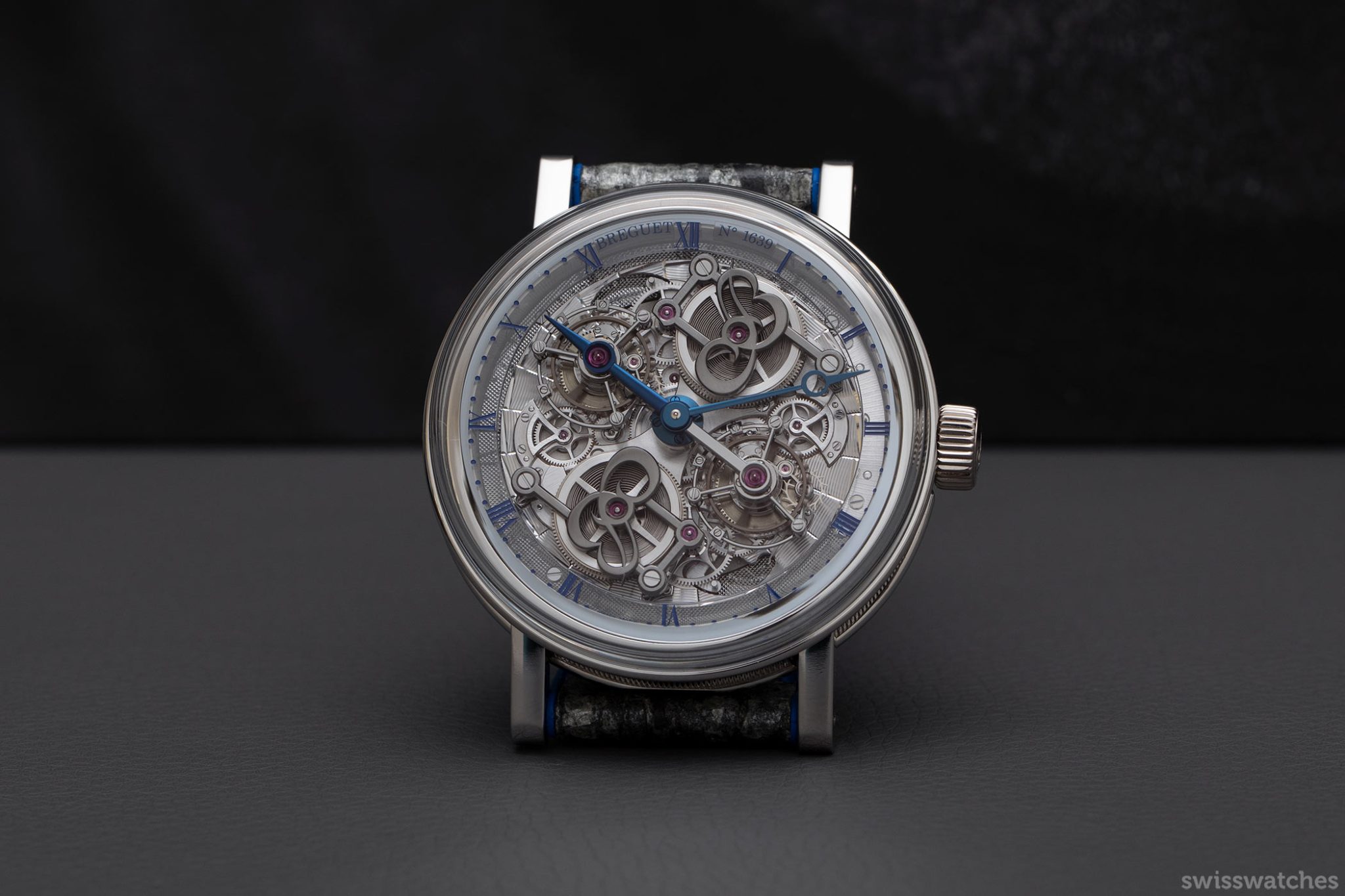
An exquisite movement, stunning finishing, and highly technical blueprint – the Classique Double Tourbillon 5345 Quai de l’Horloge stands out as one of the most breathtaking watches to emerge from the maison in modern times. It also comes with an unusual and contemporary rubber strap with a so-called ‘stone effect’, fastened with a triple clasp (after all, you wouldn’t want to lose this one).
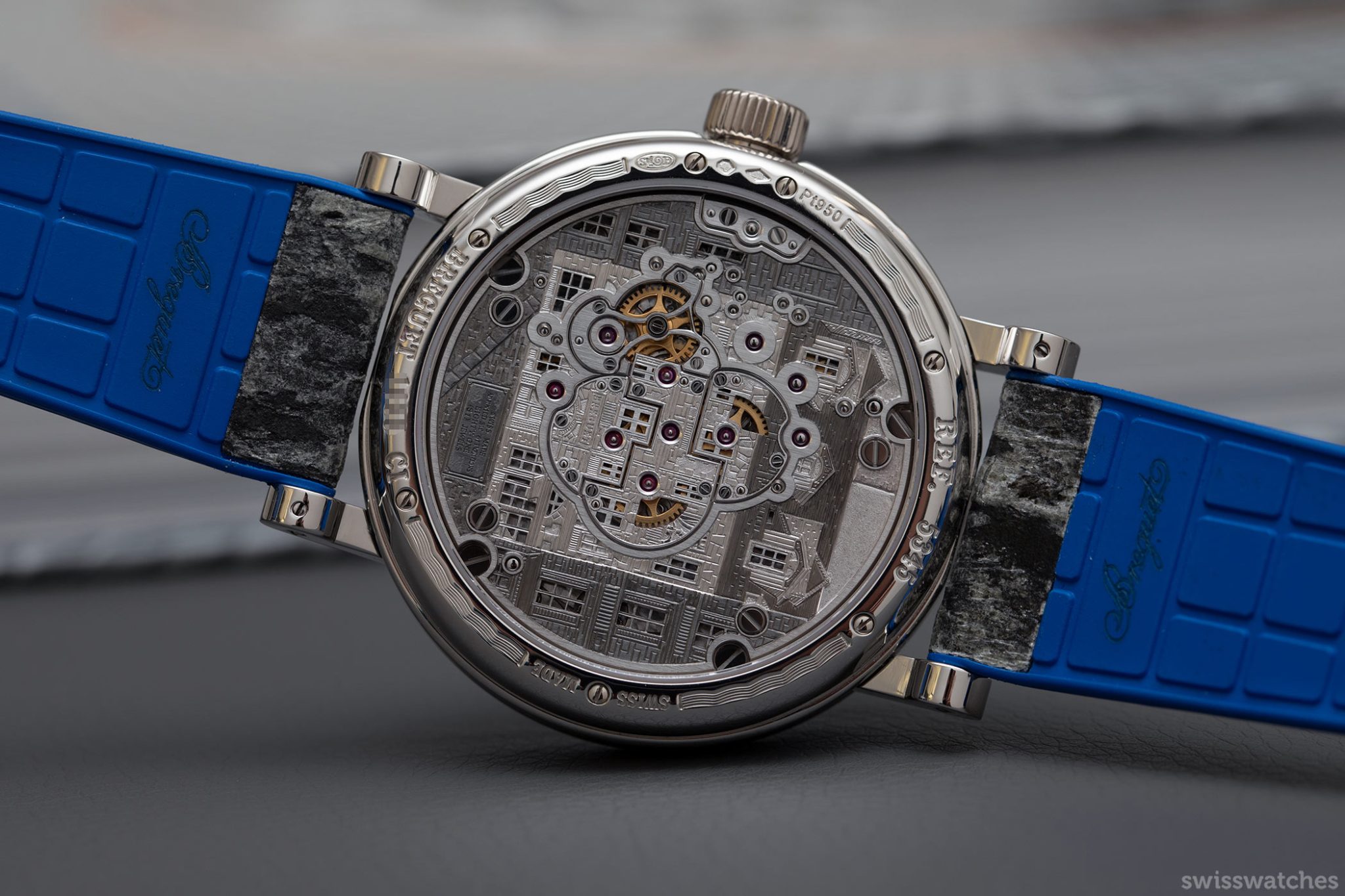
Marine Équation Marchante 5887BR
As the name suggests, this is a sibling of the Marine masterpiece from 2017. This version differs in that it has not a platinum case and blue dial, but rather a rose-gold case and a more contemporary slate-grey dial. Once again, the dial’s guilloche-peaked wave decoration is a nod to Breguet’s connection to the sea. On the caseback, a depiction of an ancient flagship of the French Navy, the Royal Louis, is hand-carved across the four bridges of the movement. The barrel drum bears an illustration of a compass rose also engraved by hand. The peripheral oscillating weight in platinum is engine-turned and engraved with the Breguet legend.
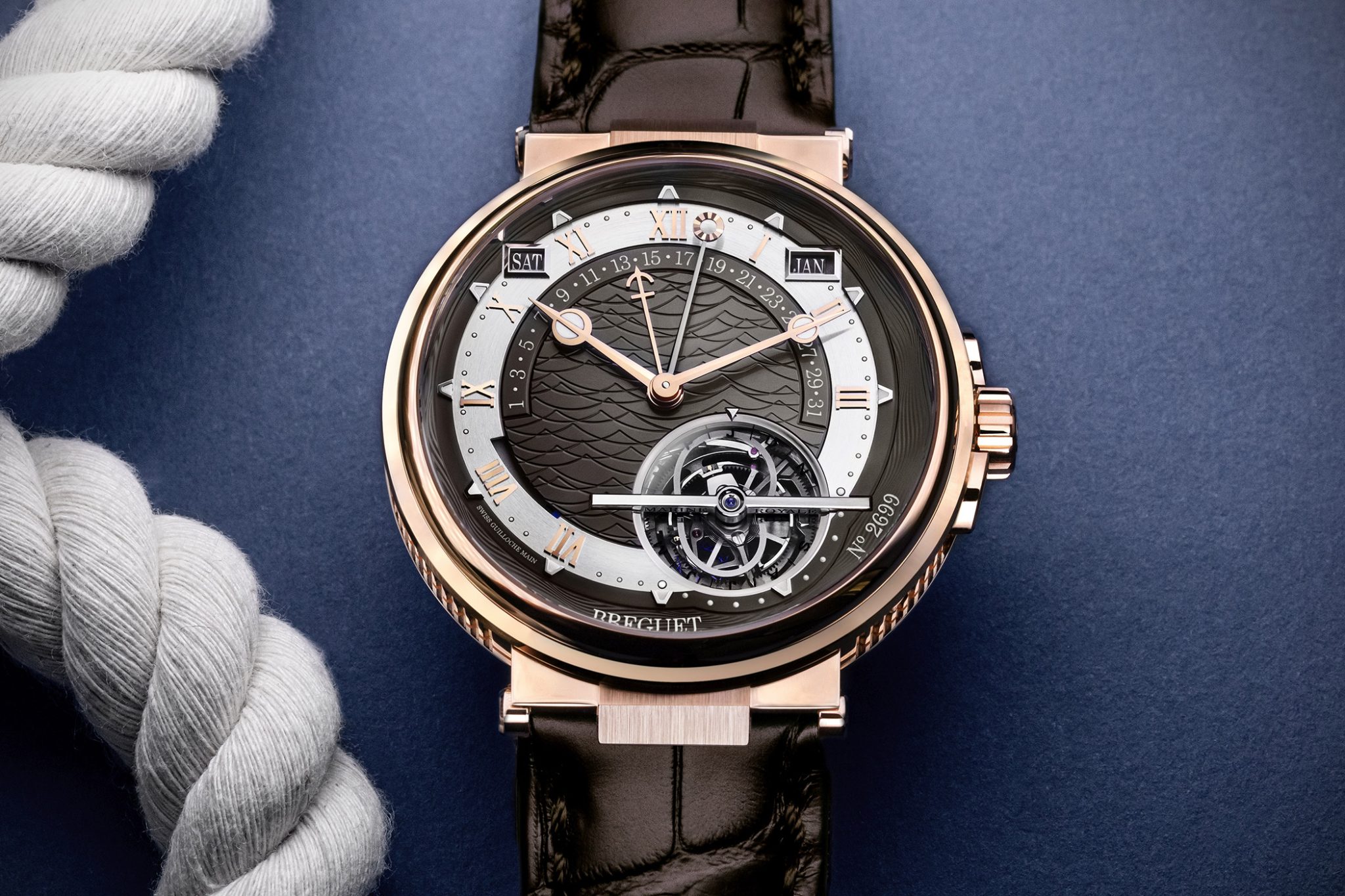
2021
Classique Tourbillon Extra-Plat Anniversaire 5365
A final tourbillon watch from Breguet that absolutely must have a mention is this year’s 5365. The observant reader will note that this timepiece coincides with the 220th anniversary since Breguet’s patenting of defying gravity itself. In keeping with the 35 actual tourbillon pocket watches Breguet made, as mentioned (much) earlier, there are only 35 pieces of this highly coveted watch in existence.
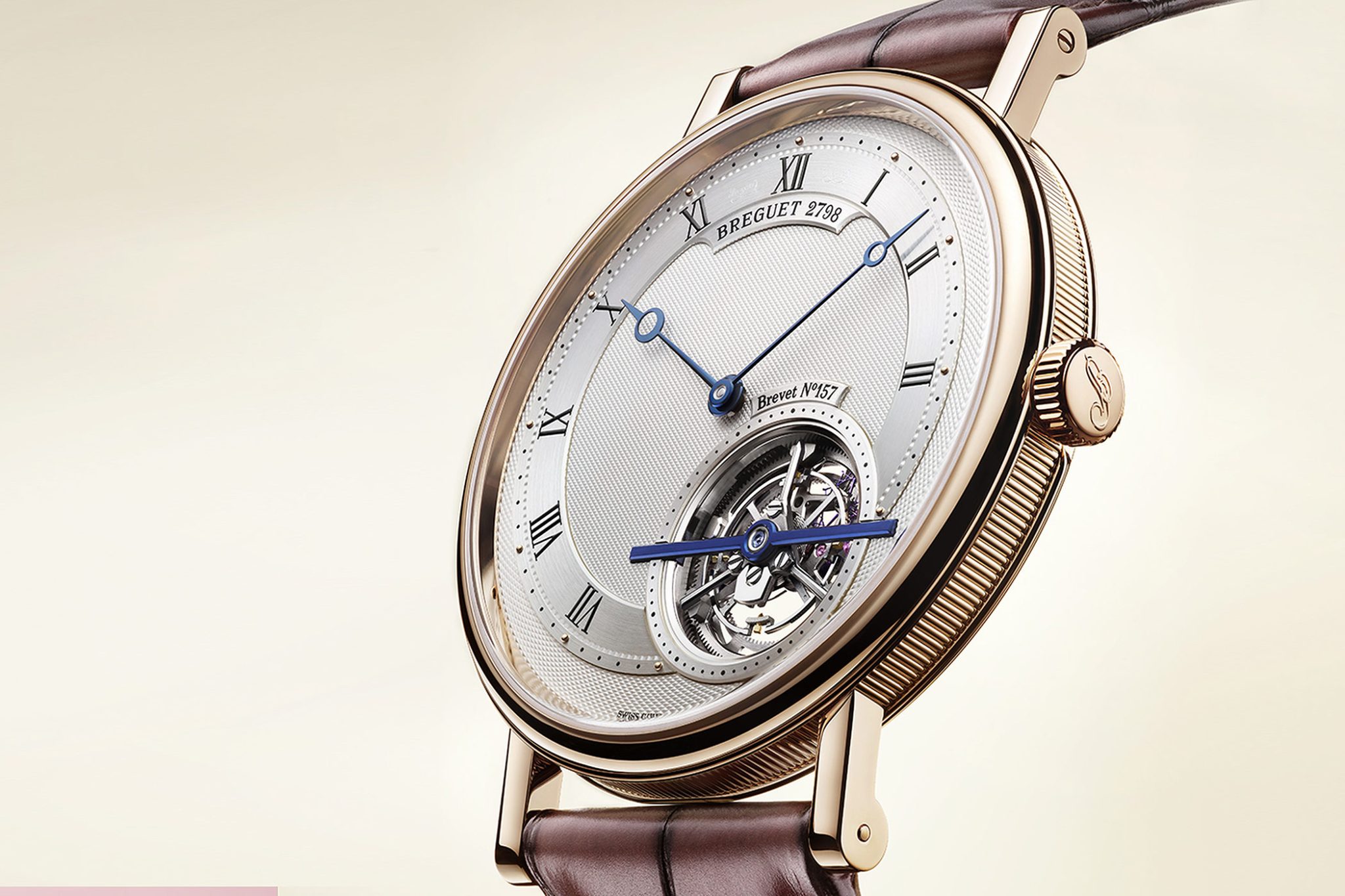
Measuring 41 mm x only 7.08 mm, the rose-gold creation again shows its finery upon second glance. With a 18-carat silver-plated gold dial, it features several decorations. Most striking, perhaps, is the centre’s Clous de Paris pattern, which gives the impression of a matte coating. This is to make it easier to read the two pomme hands made of blued stainless steel. For this purpose, there is also a subtly off-centre hour circle with Roman numerals. The periphery around it showcases a grain d’orge motif.
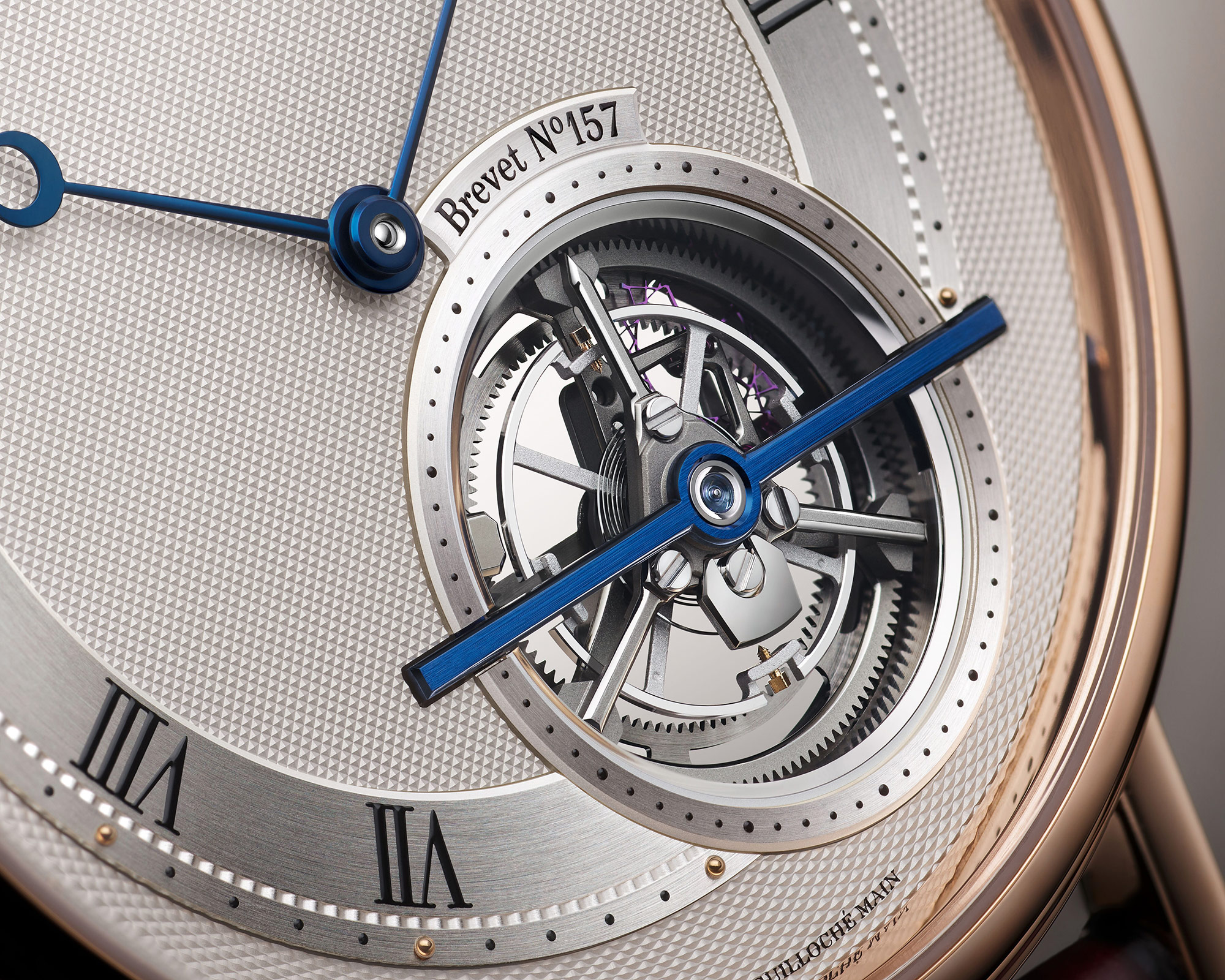
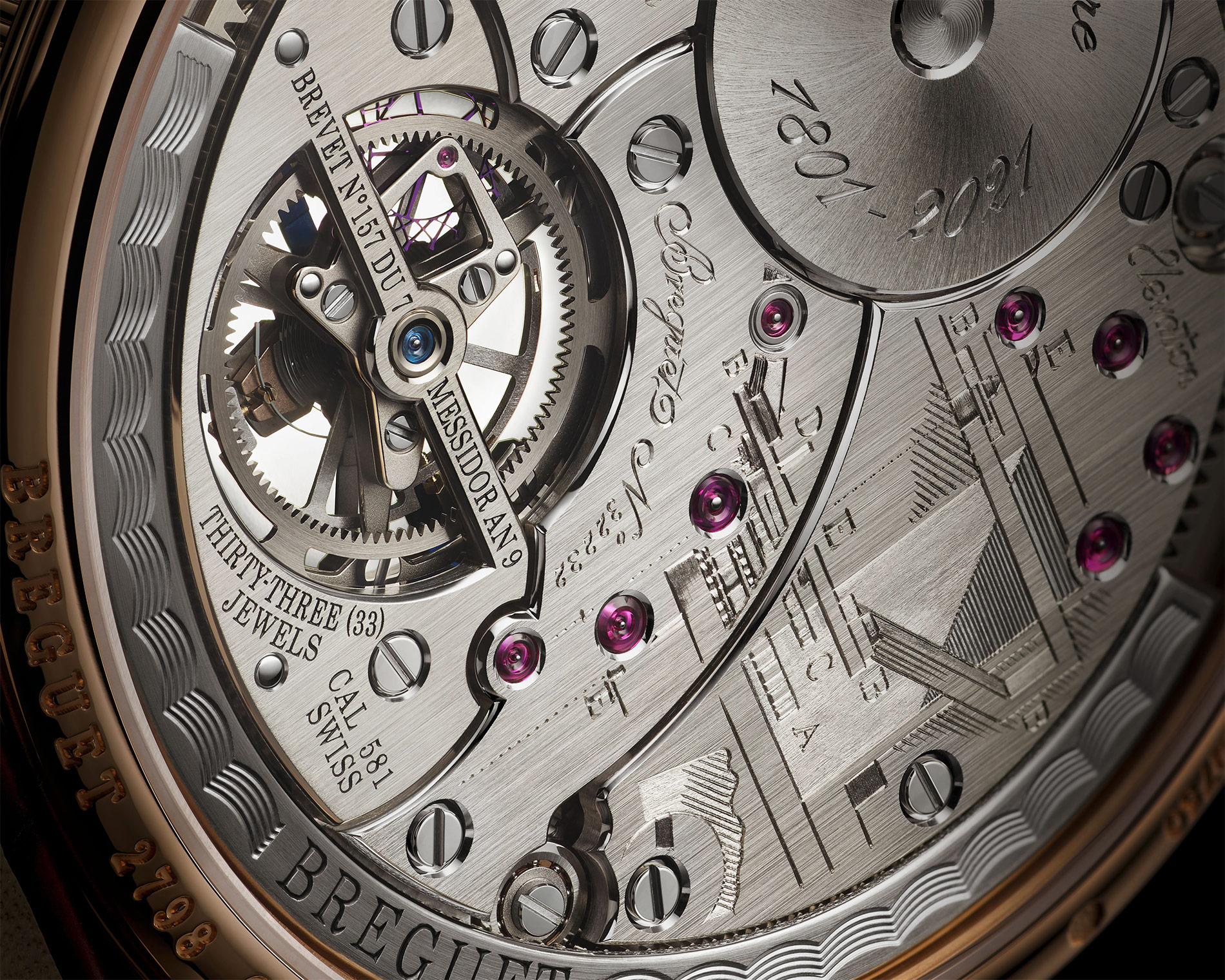
Once again, the tourbillon can additionally provide small seconds. It attaches to a bridge of blued stainless steel – an unusual characteristic to see in the Classique collection. The note Brevet N°157 Du 7 Messidor An IX on the bridge of the tourbillon refers to Breguet’s patent application for his invention. Powering the timepiece is the manufacture’s trusty 581 movement.
2021: The year of the tourbillon
Humans lose interest in things increasingly quickly – we struggle to keep our concentration, and fads come and go. We consistently casually replace one device with the next. Yet with Abraham-Louis Breguet’s tourbillon, we have an invention that is transcending time, enthralling us across the centuries. Perhaps this is because the complication encapsulates the charm of mechanical things so well. It is highly intricate, ingenious, yet simultaneously takes us back to what feels like a simpler time. We can only guess what the next 200 years will bring. But if we keep remembering to look to the past as well as the future, perhaps we can all still learn a thing or two.
